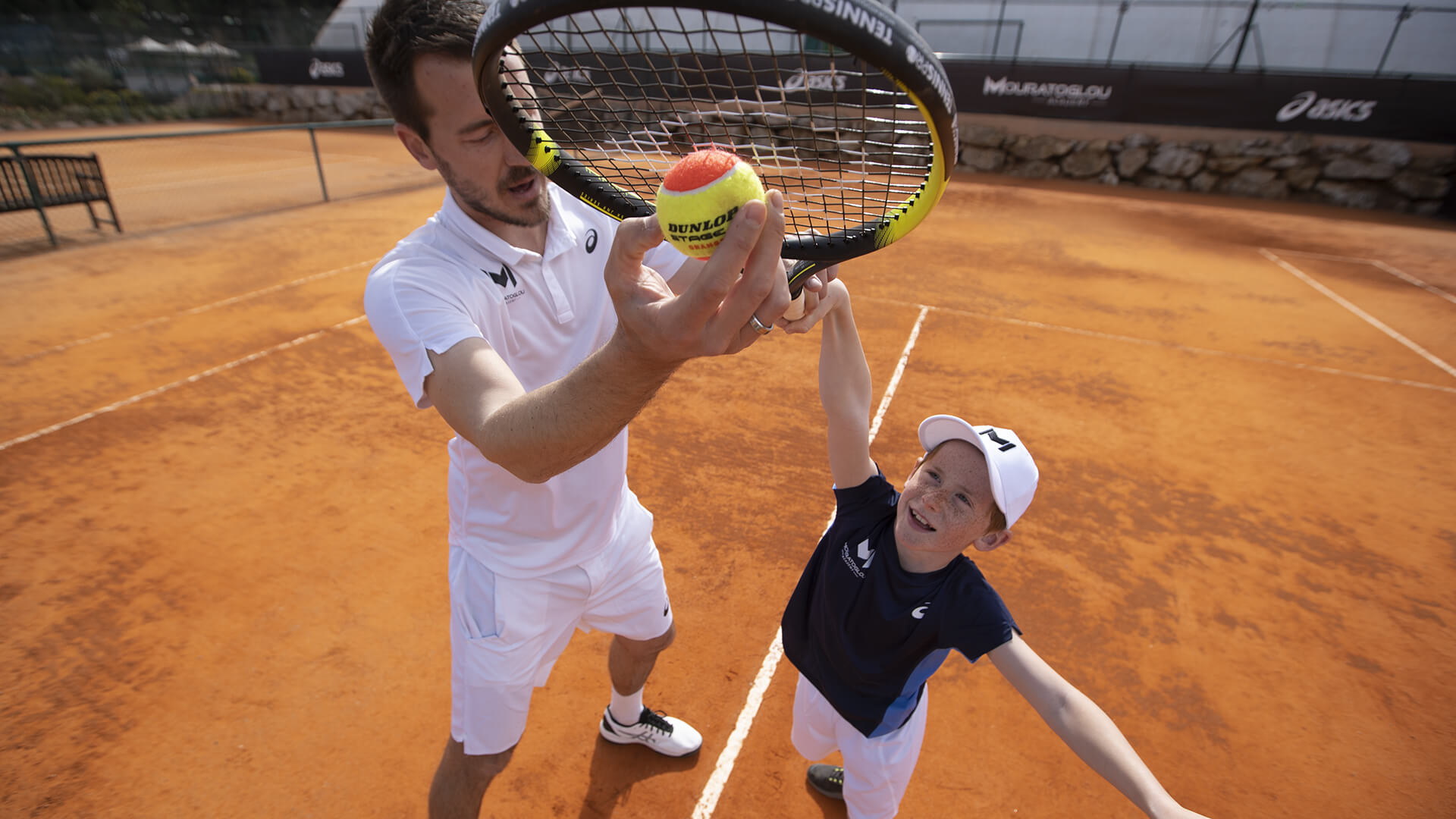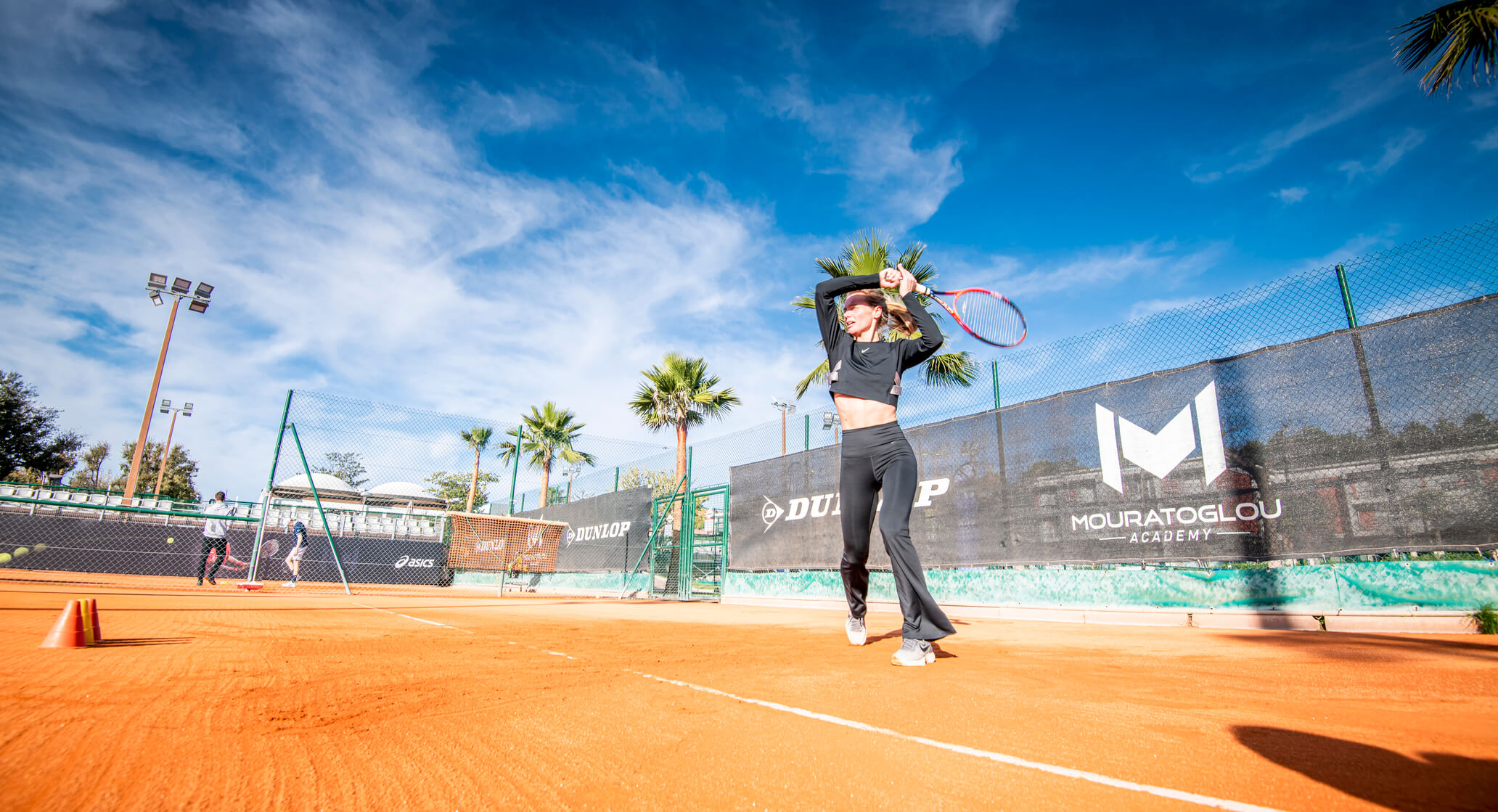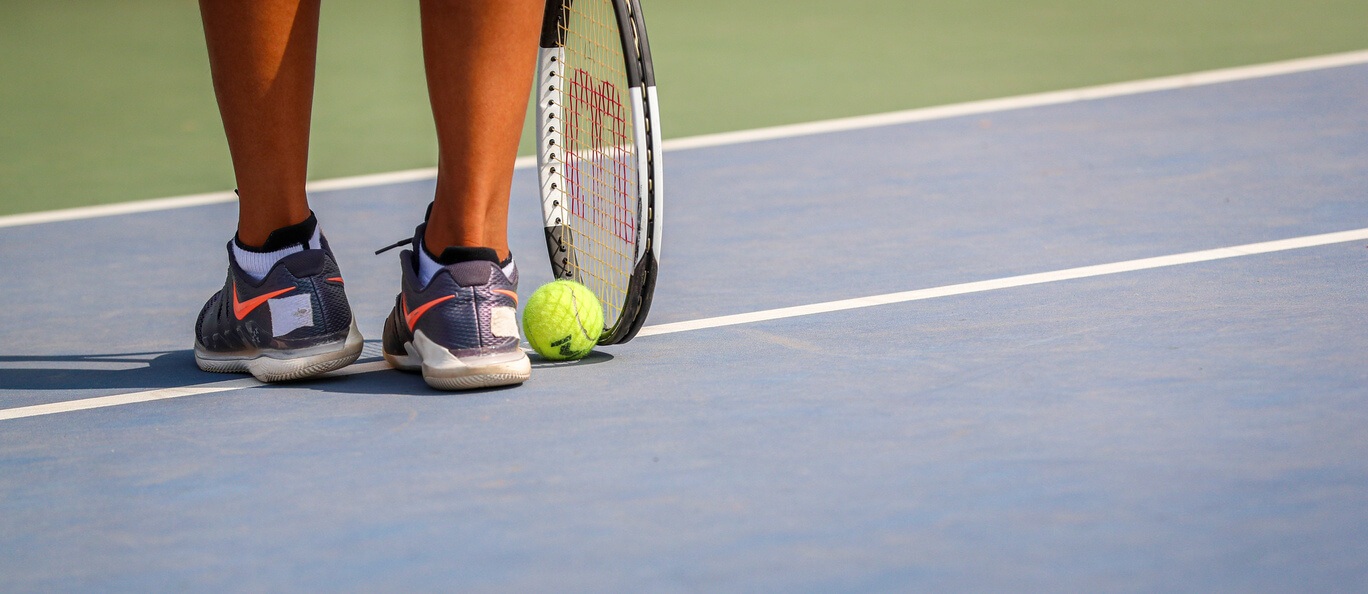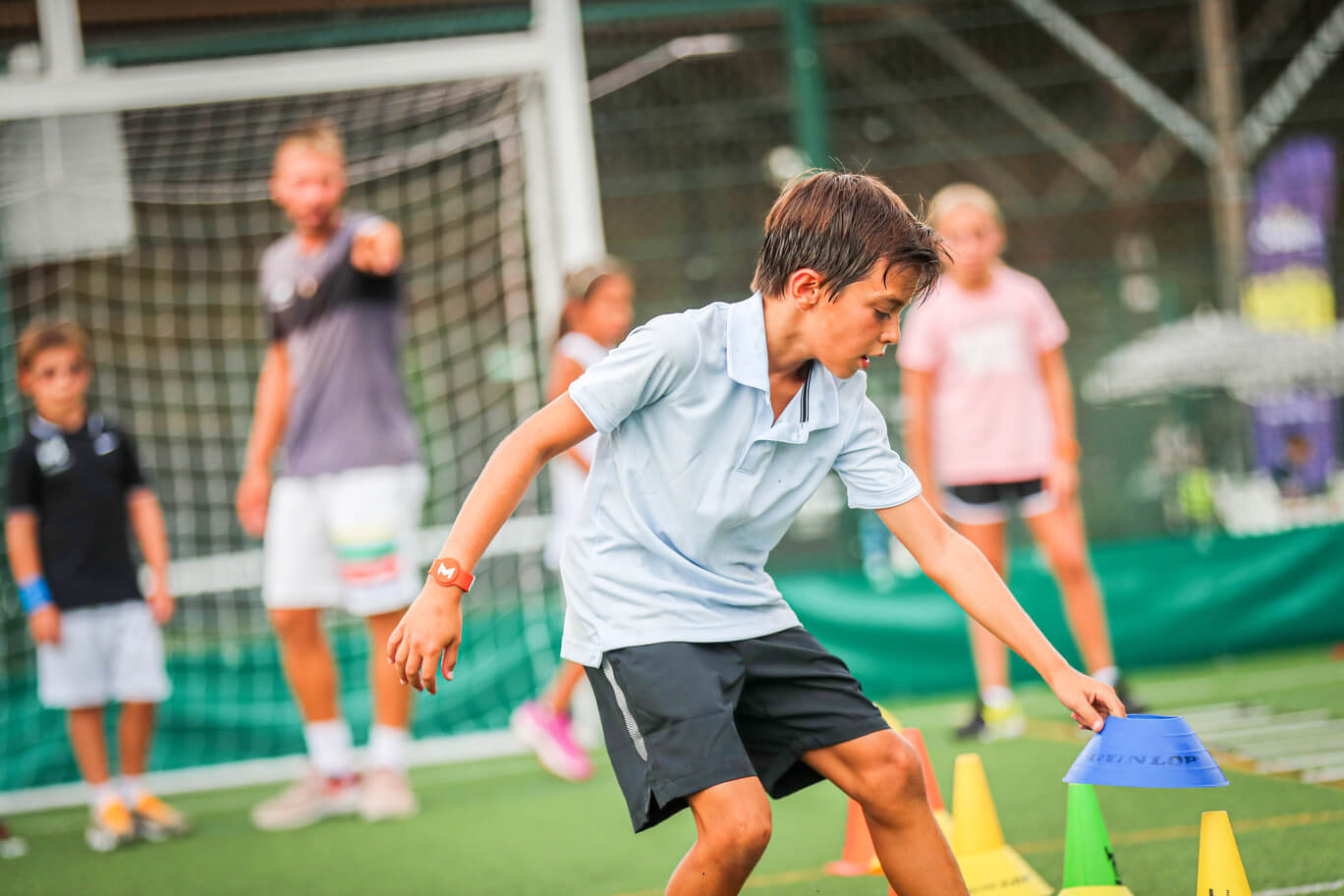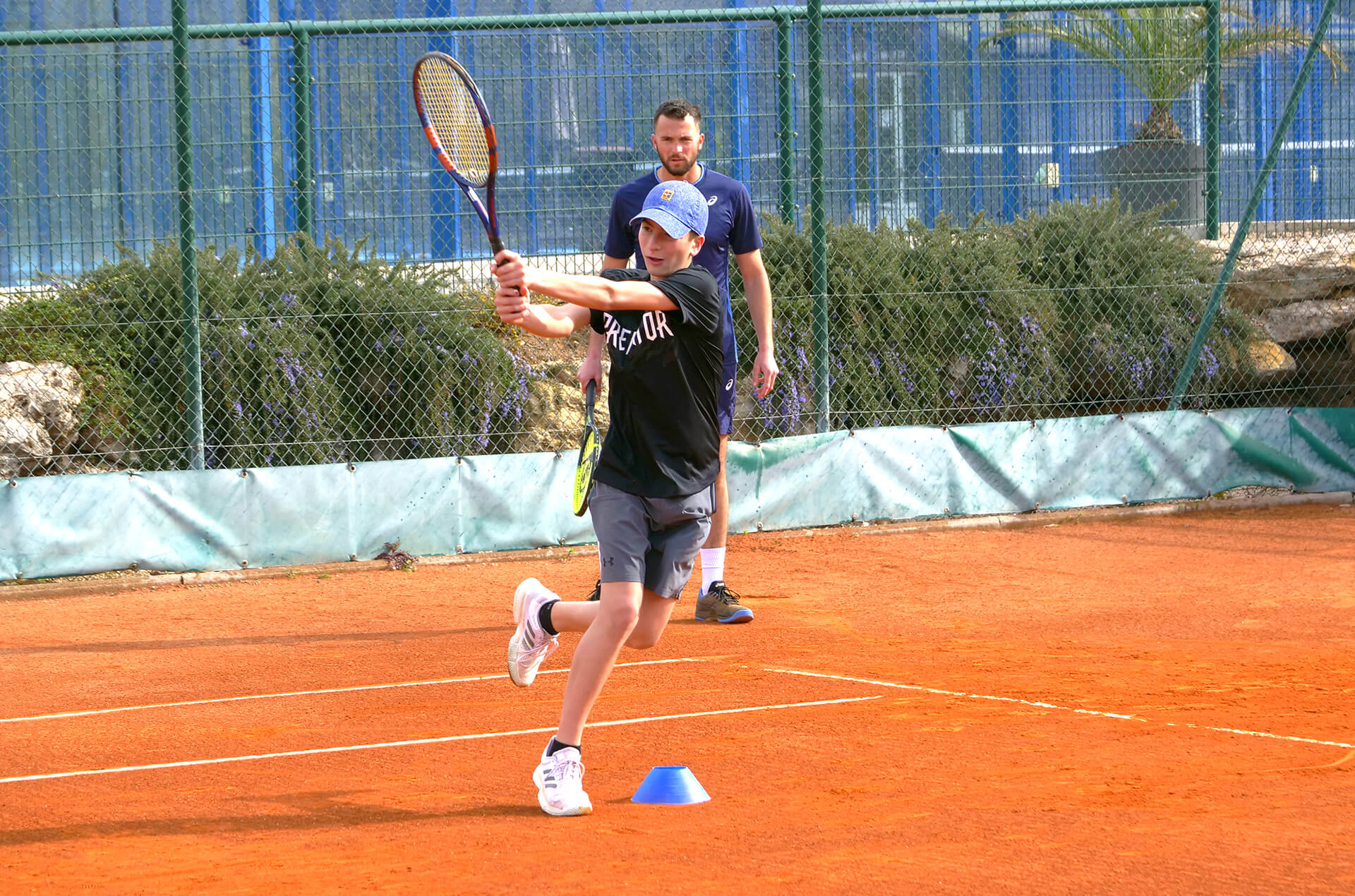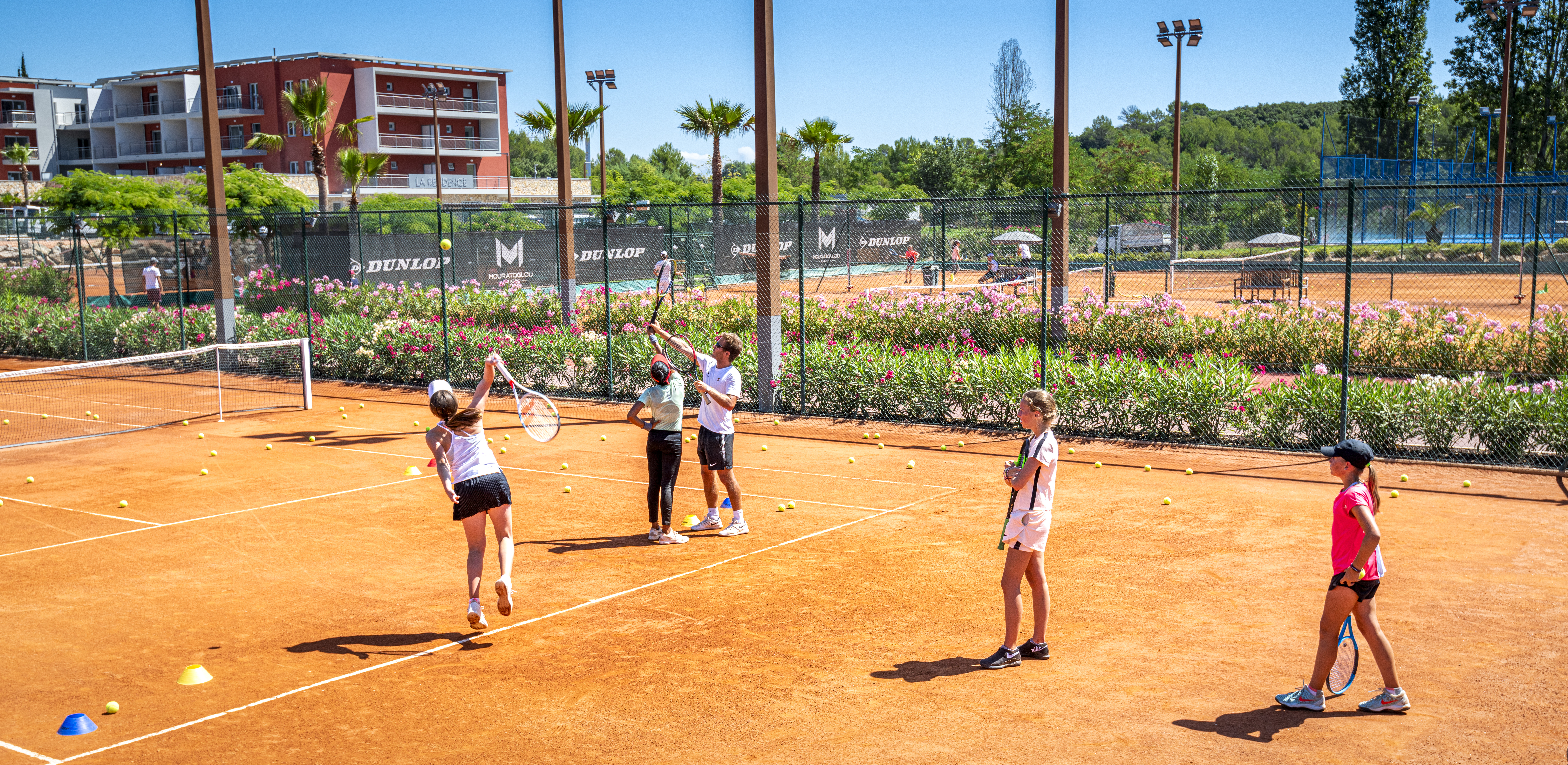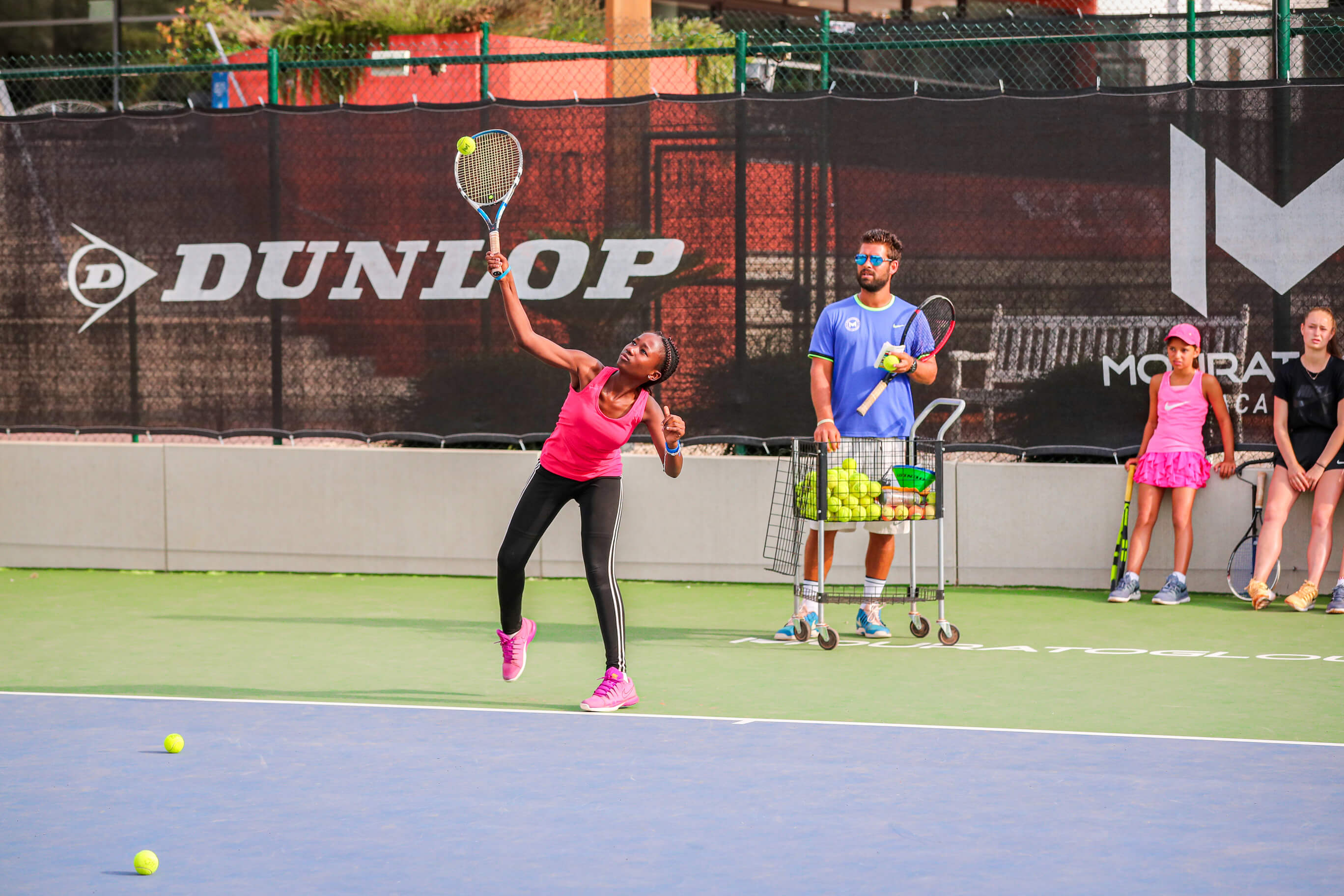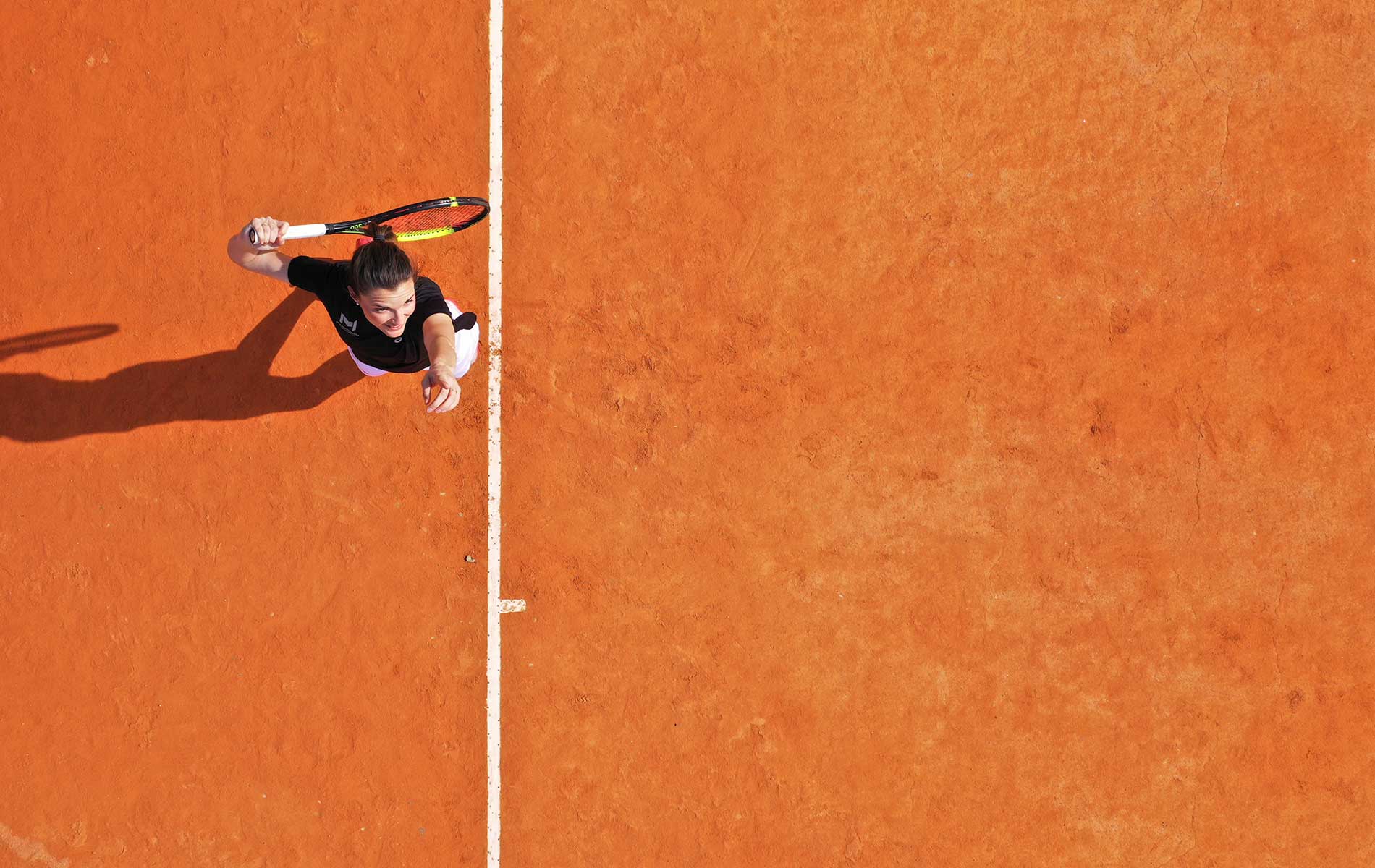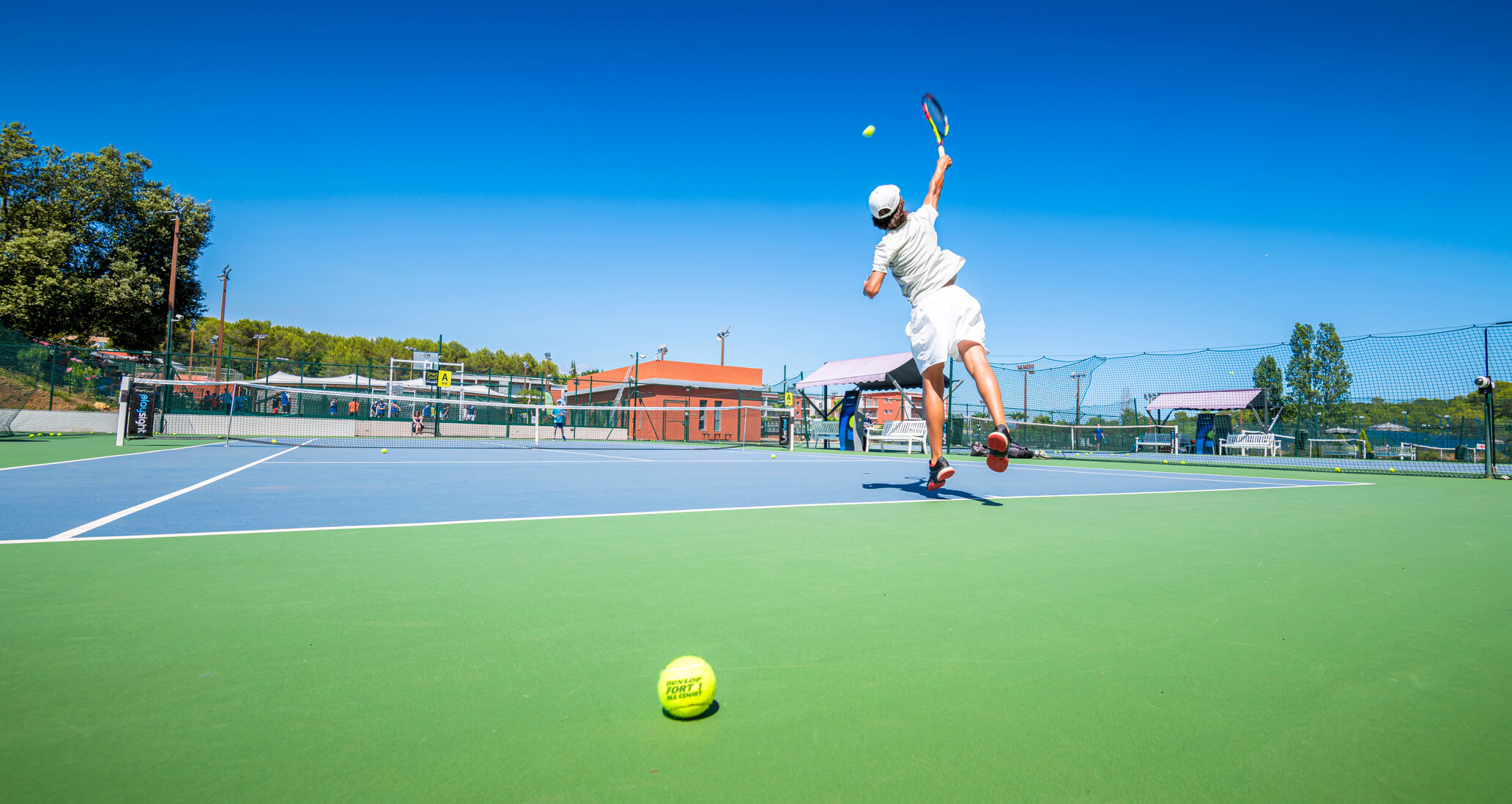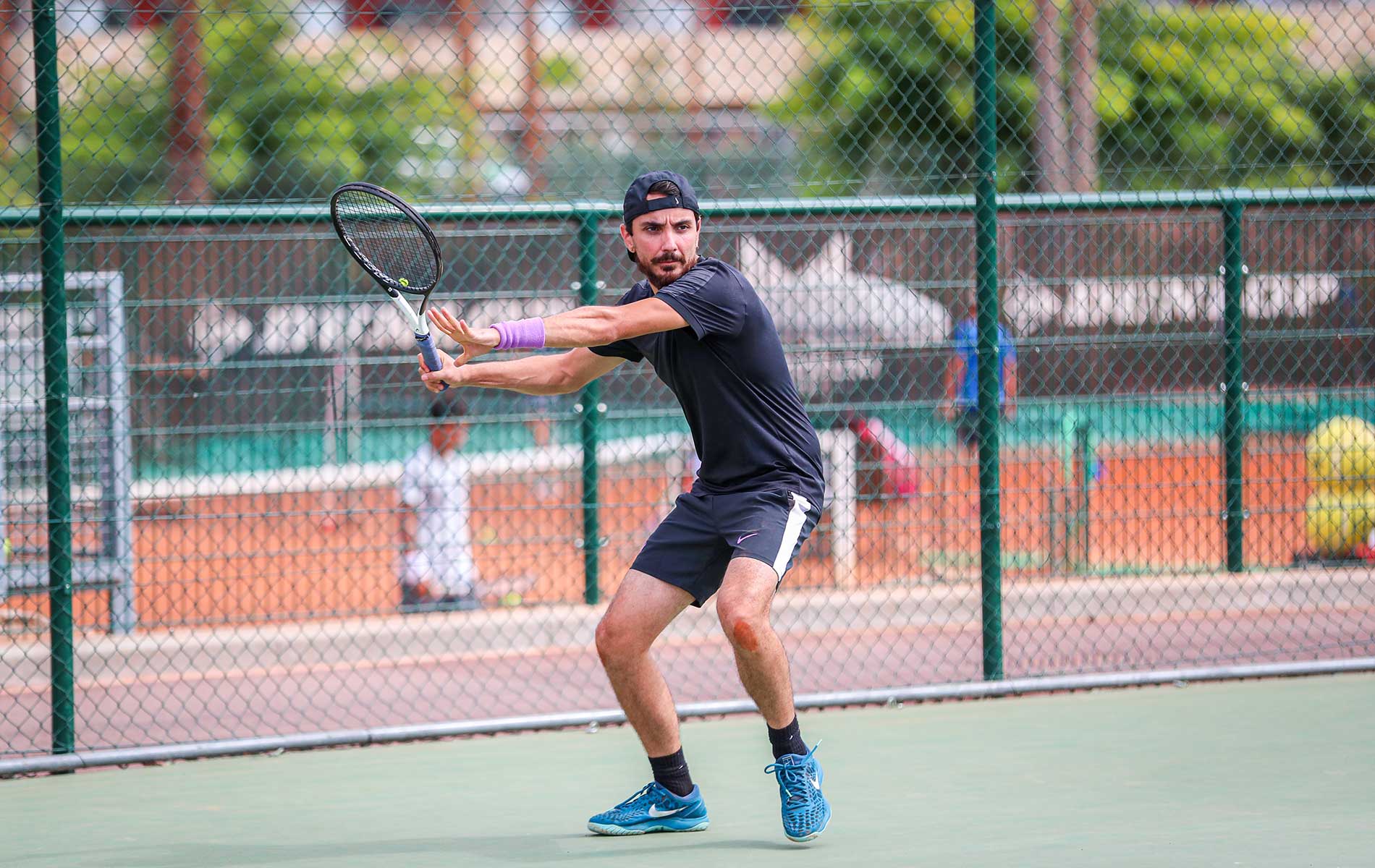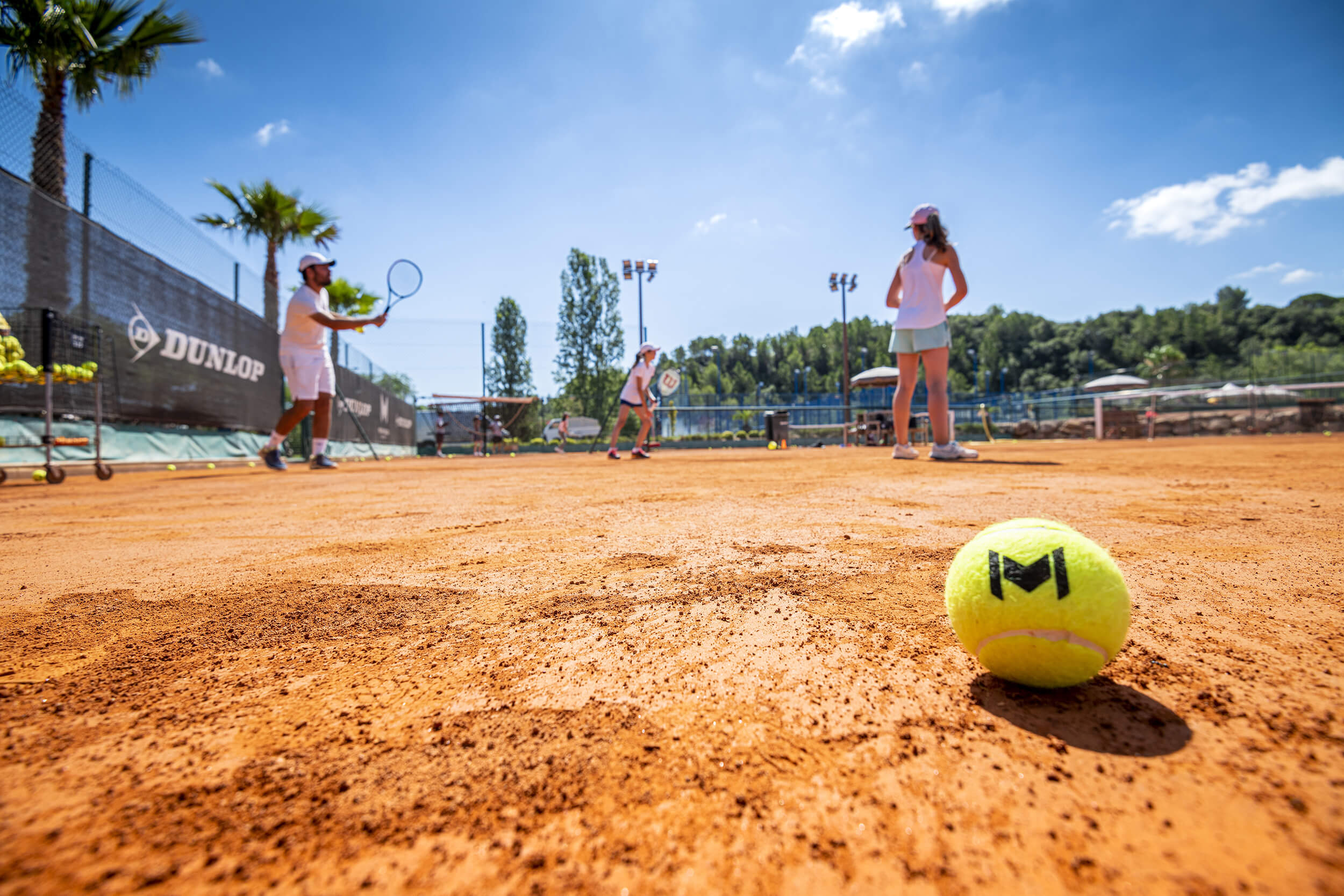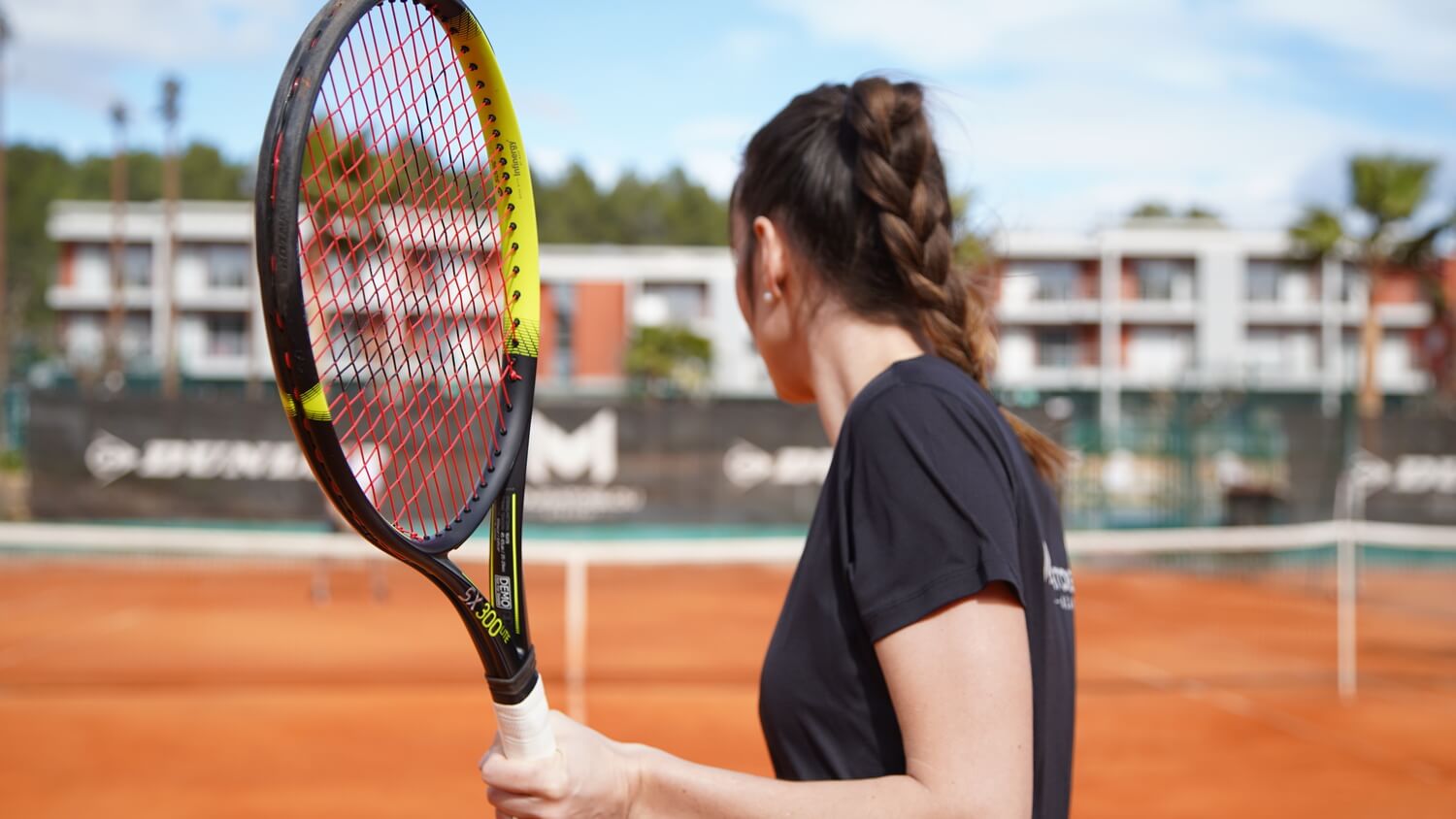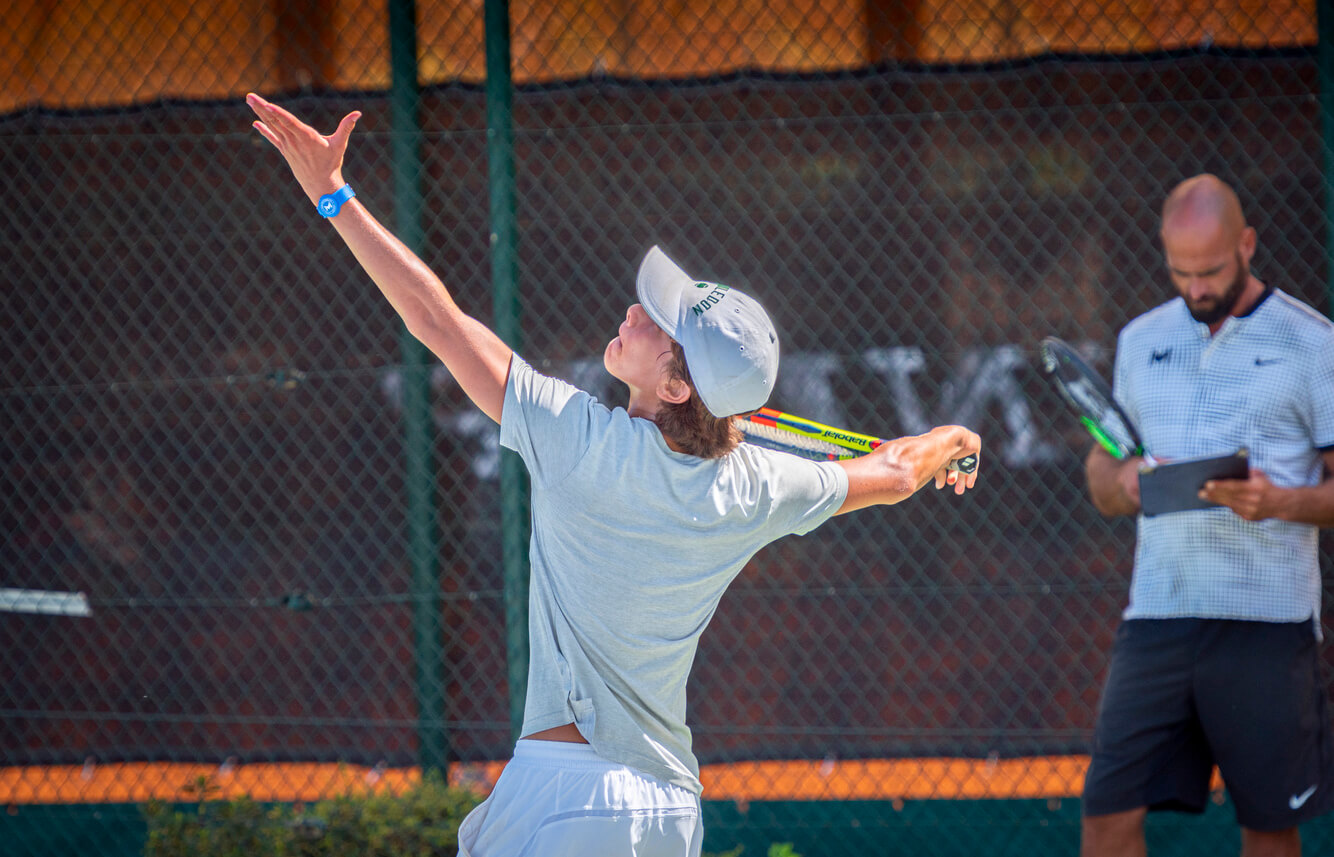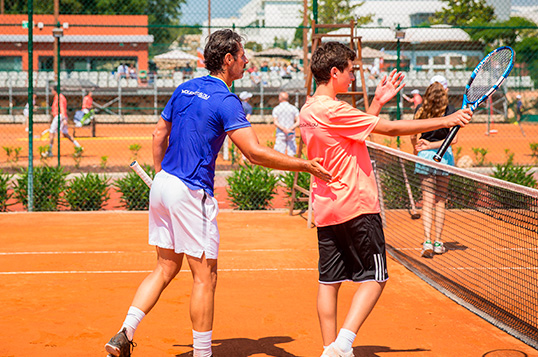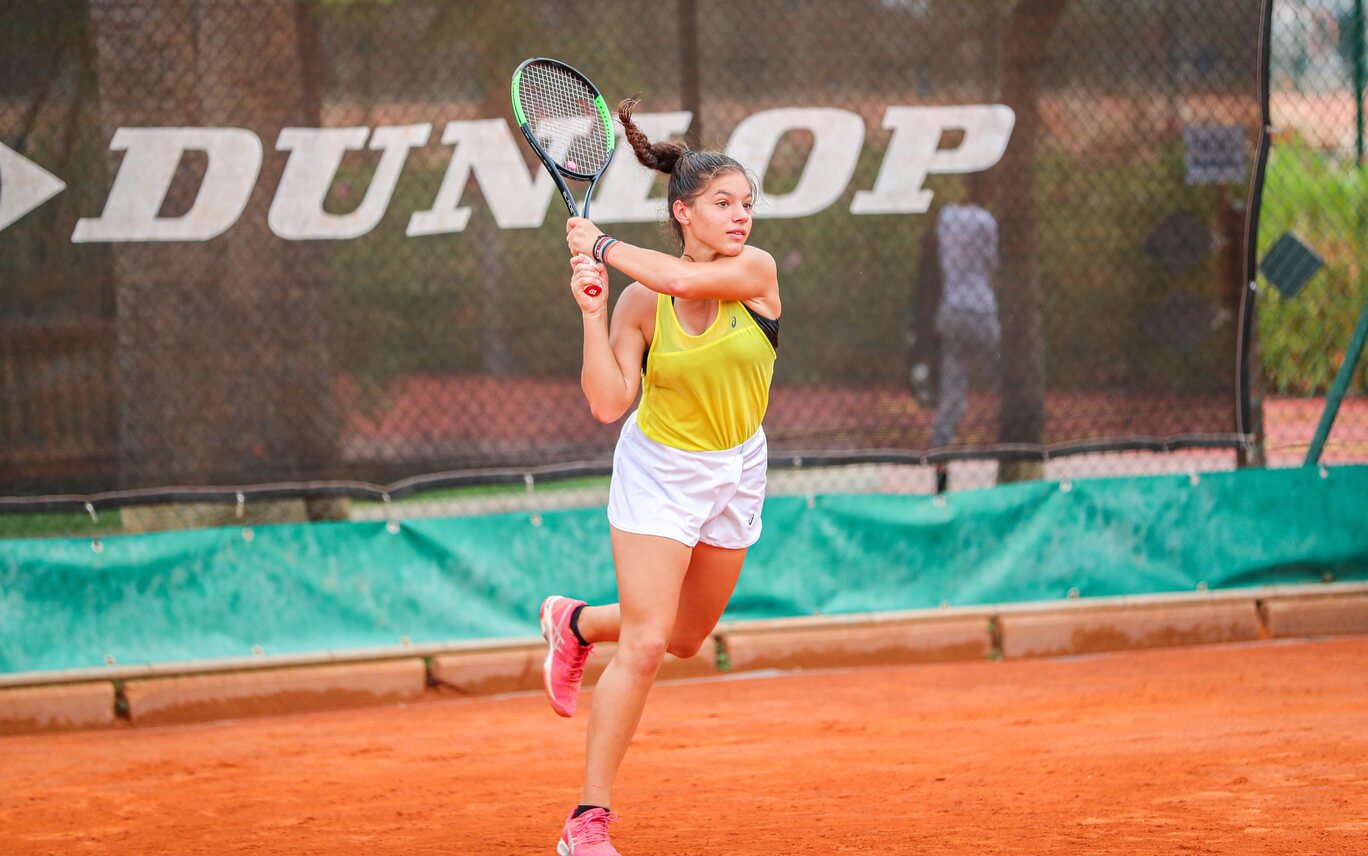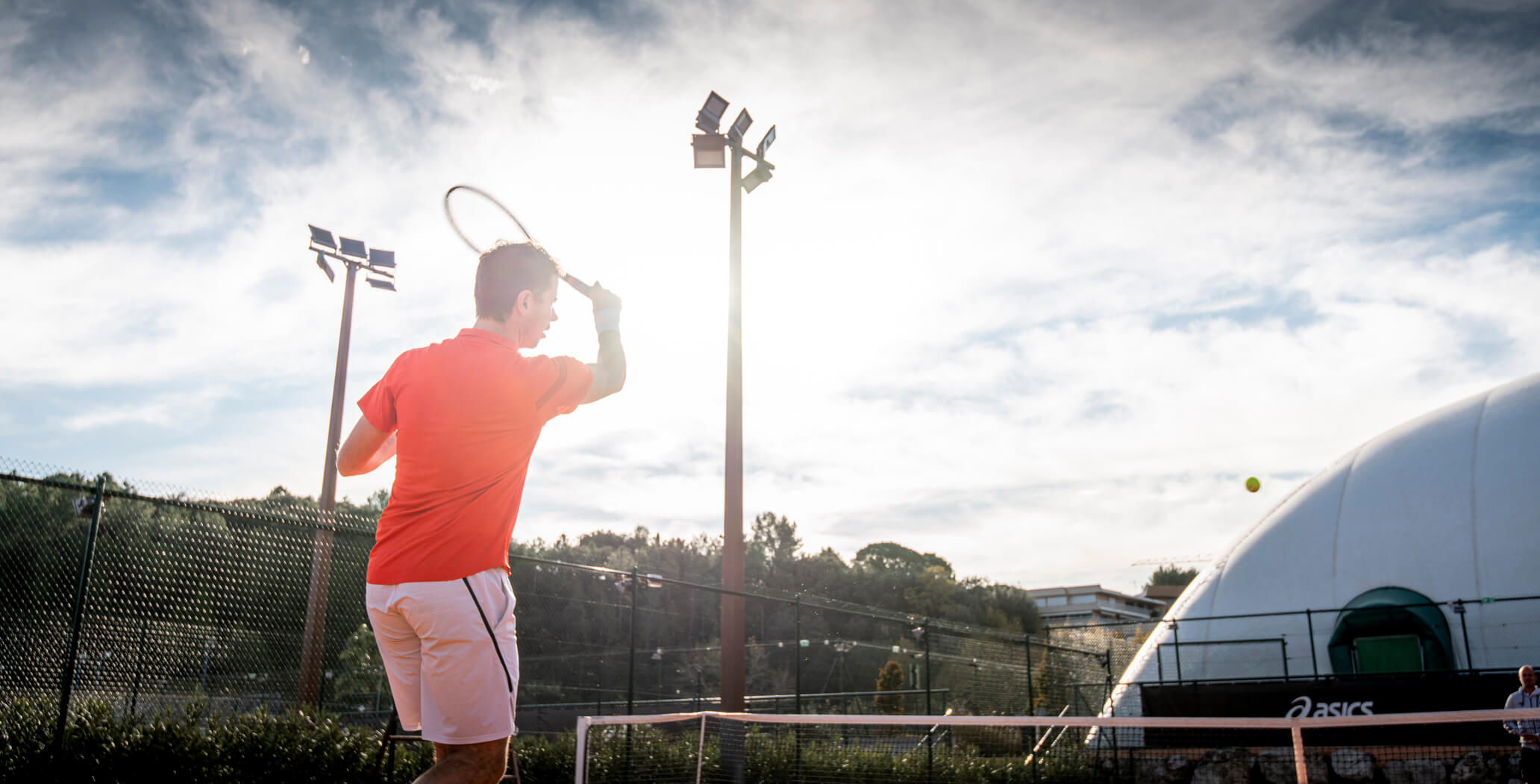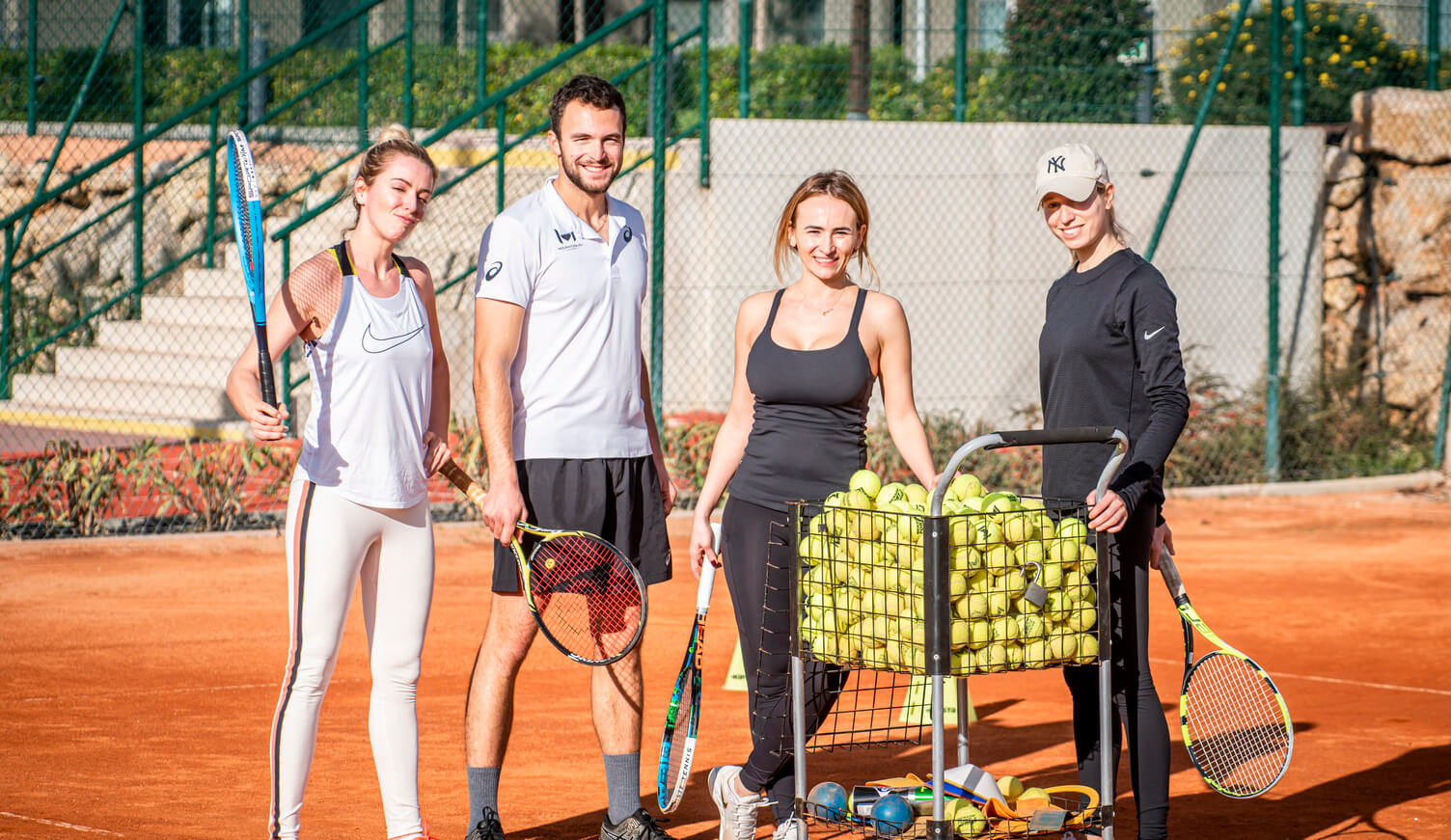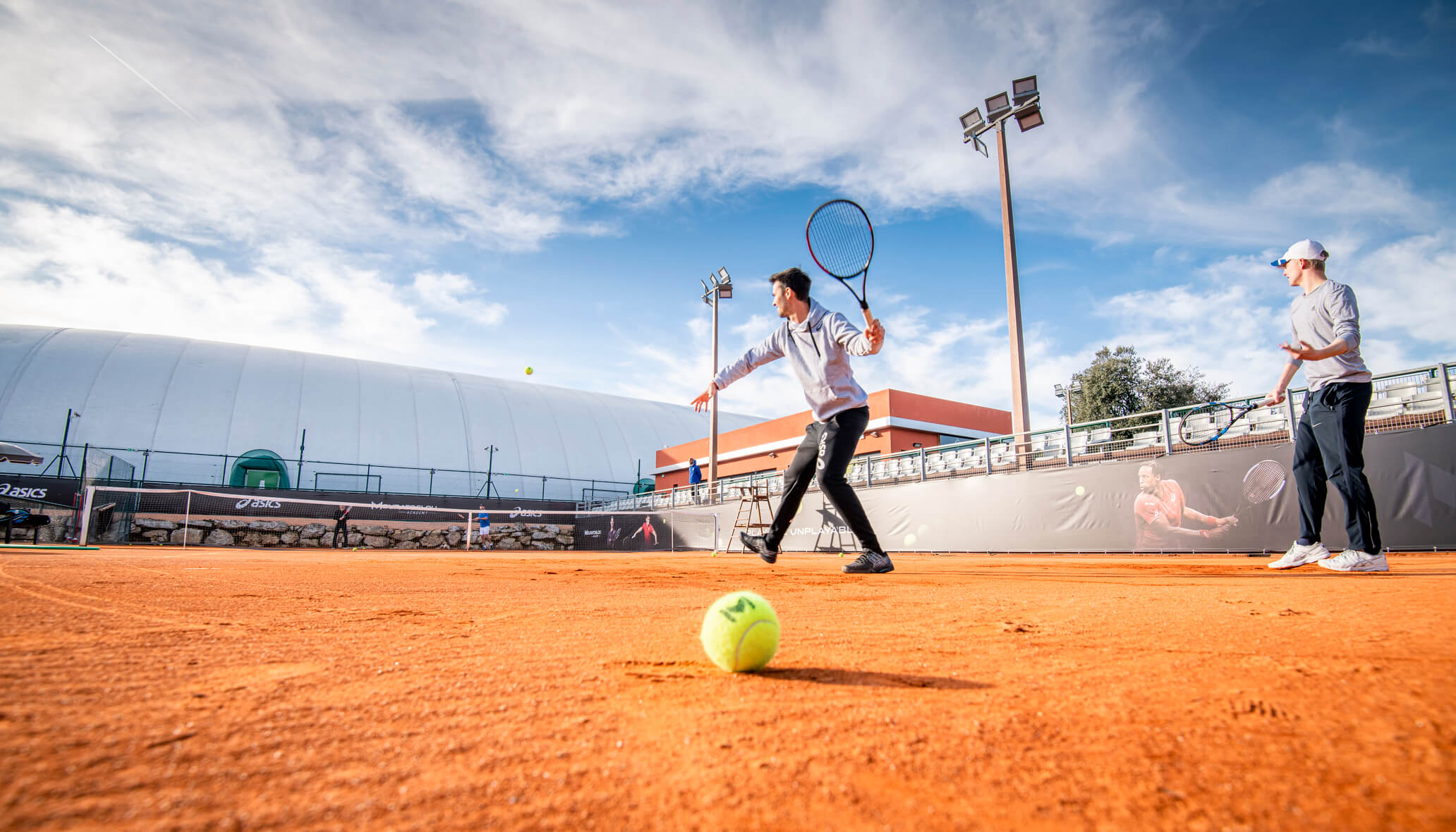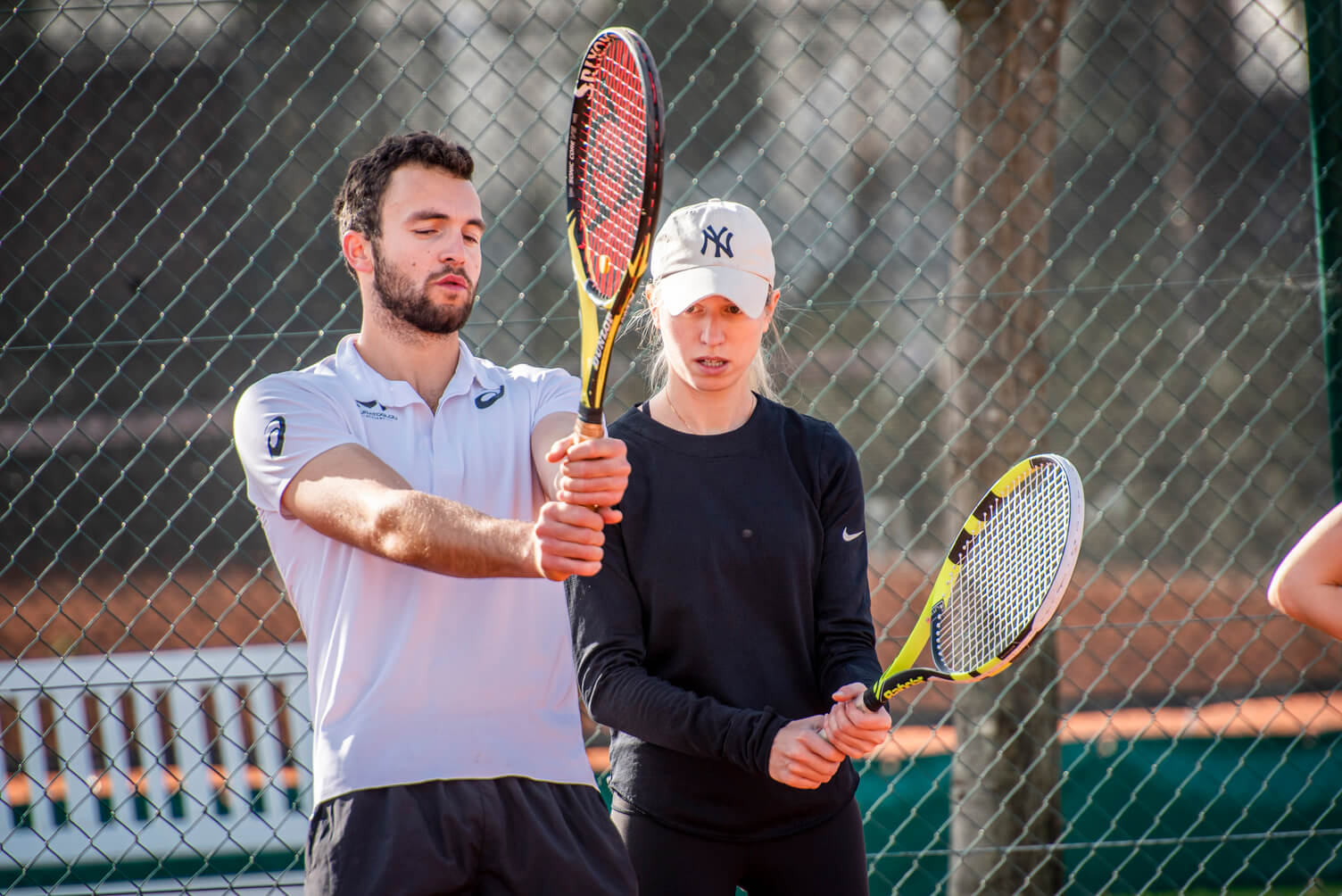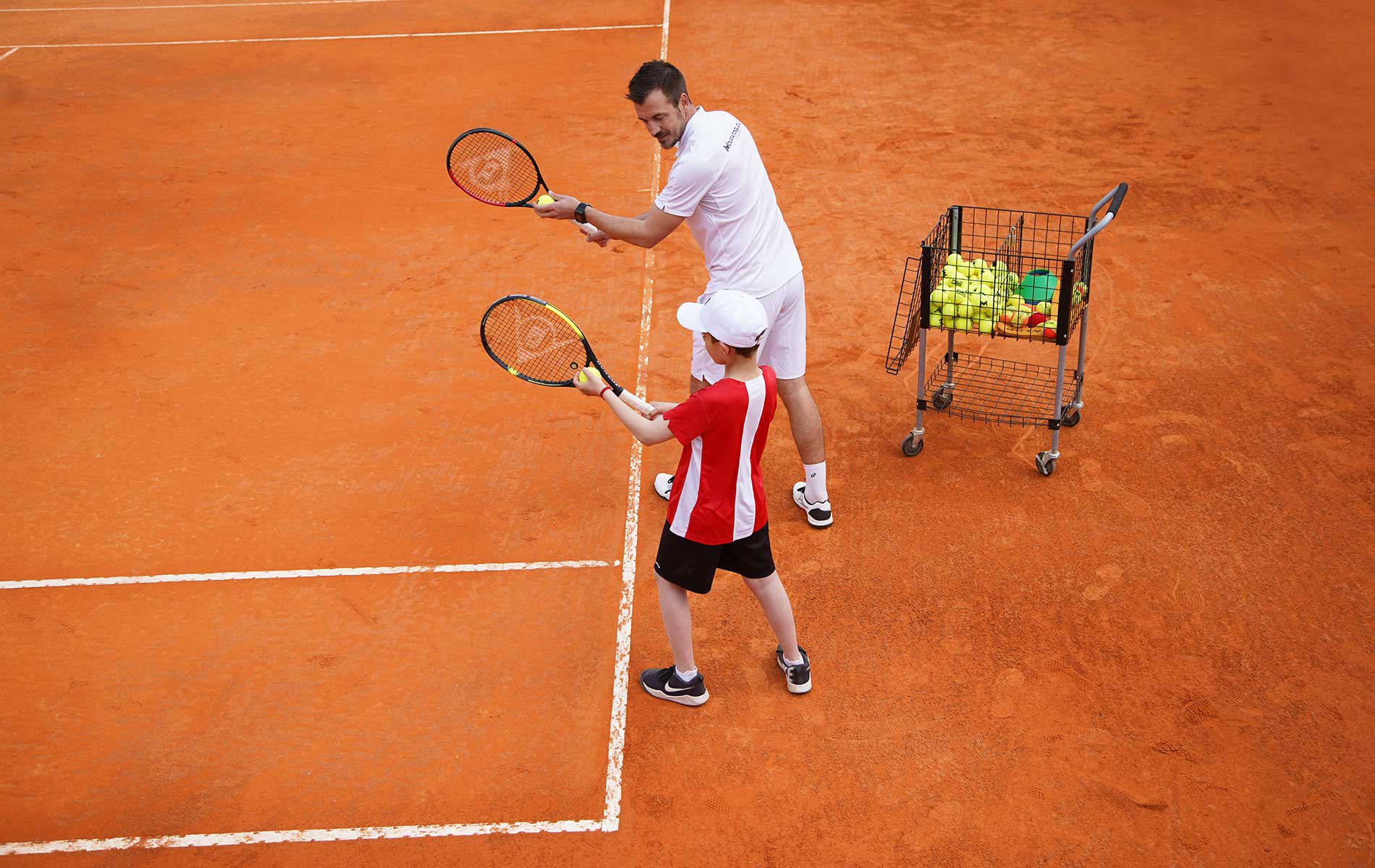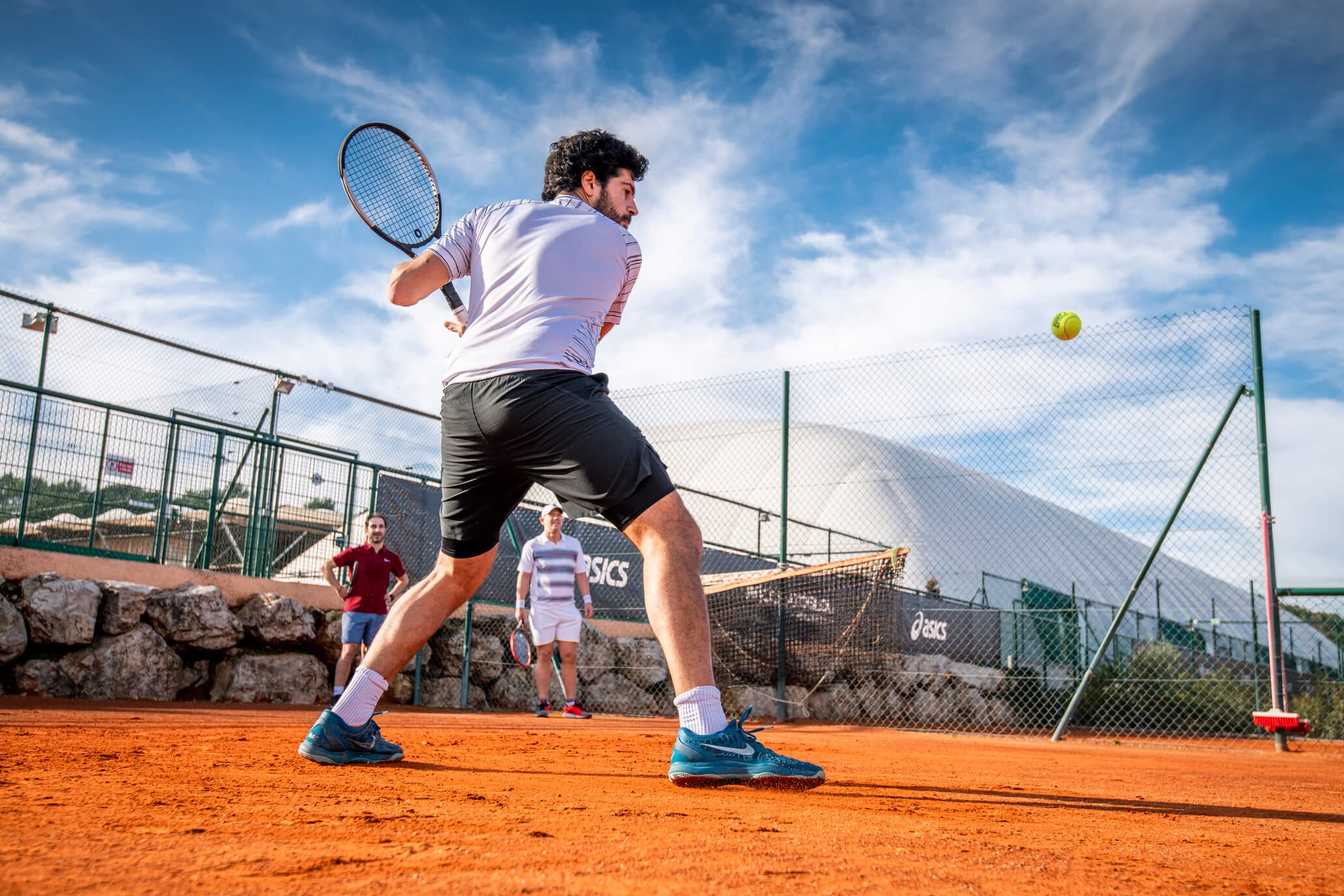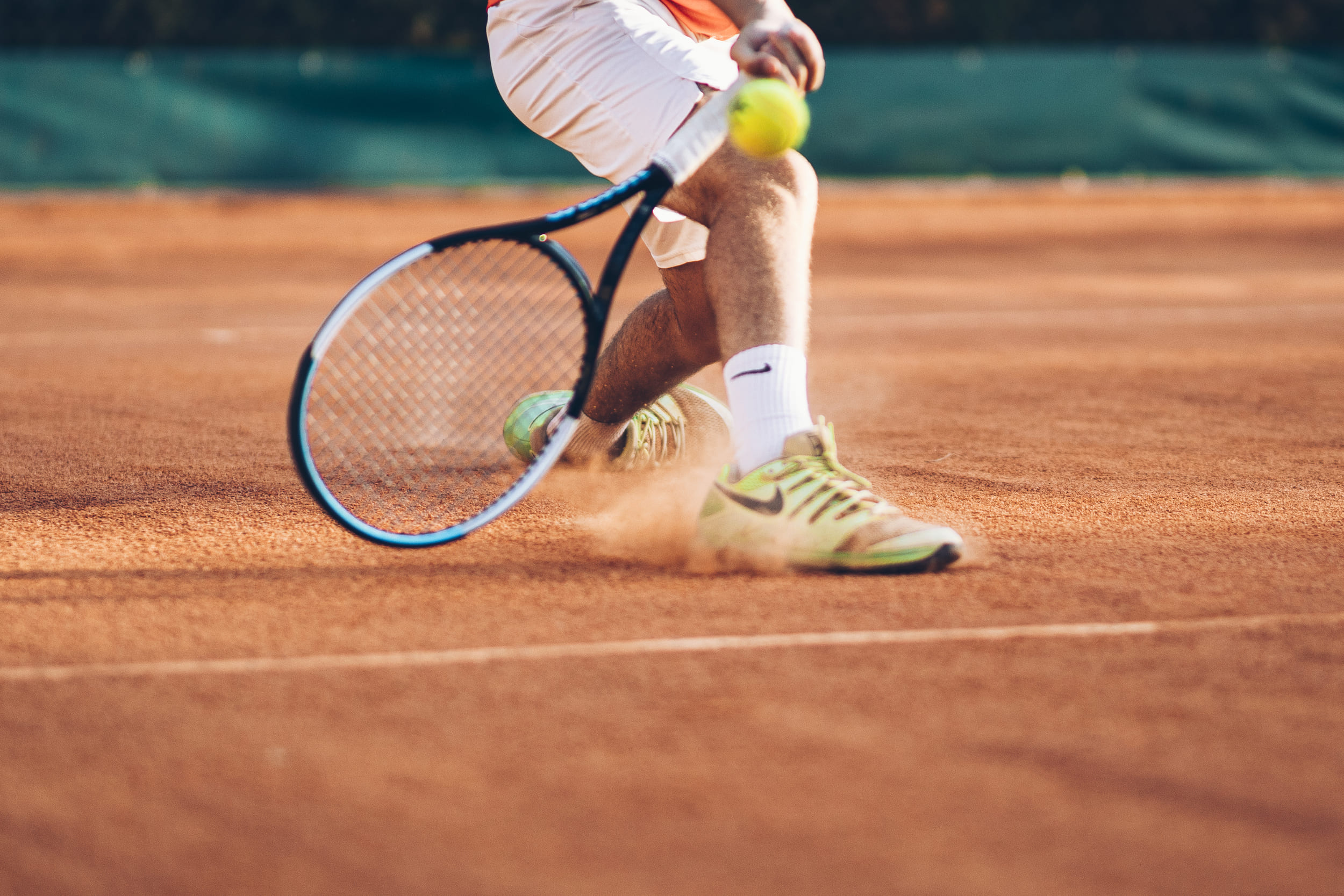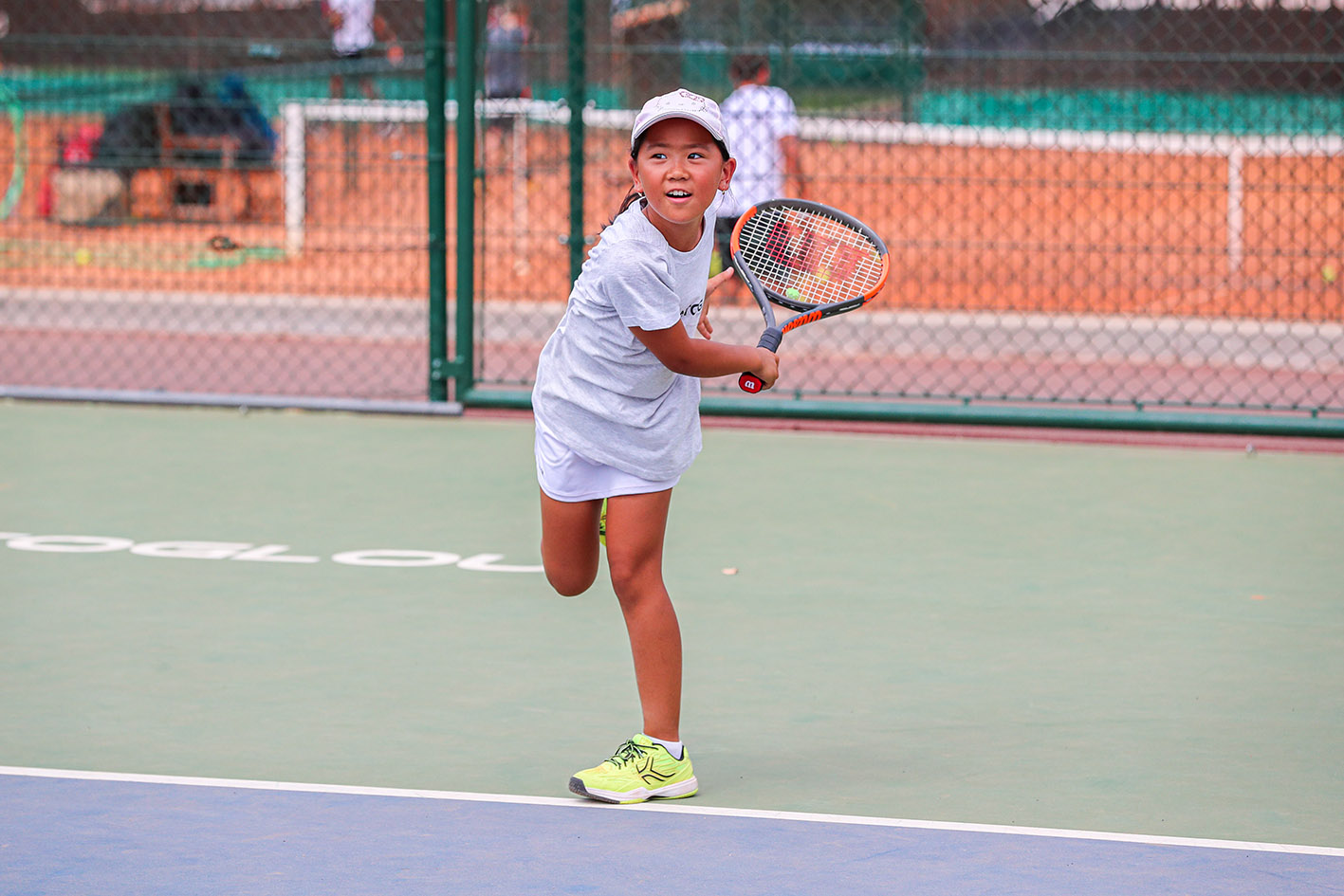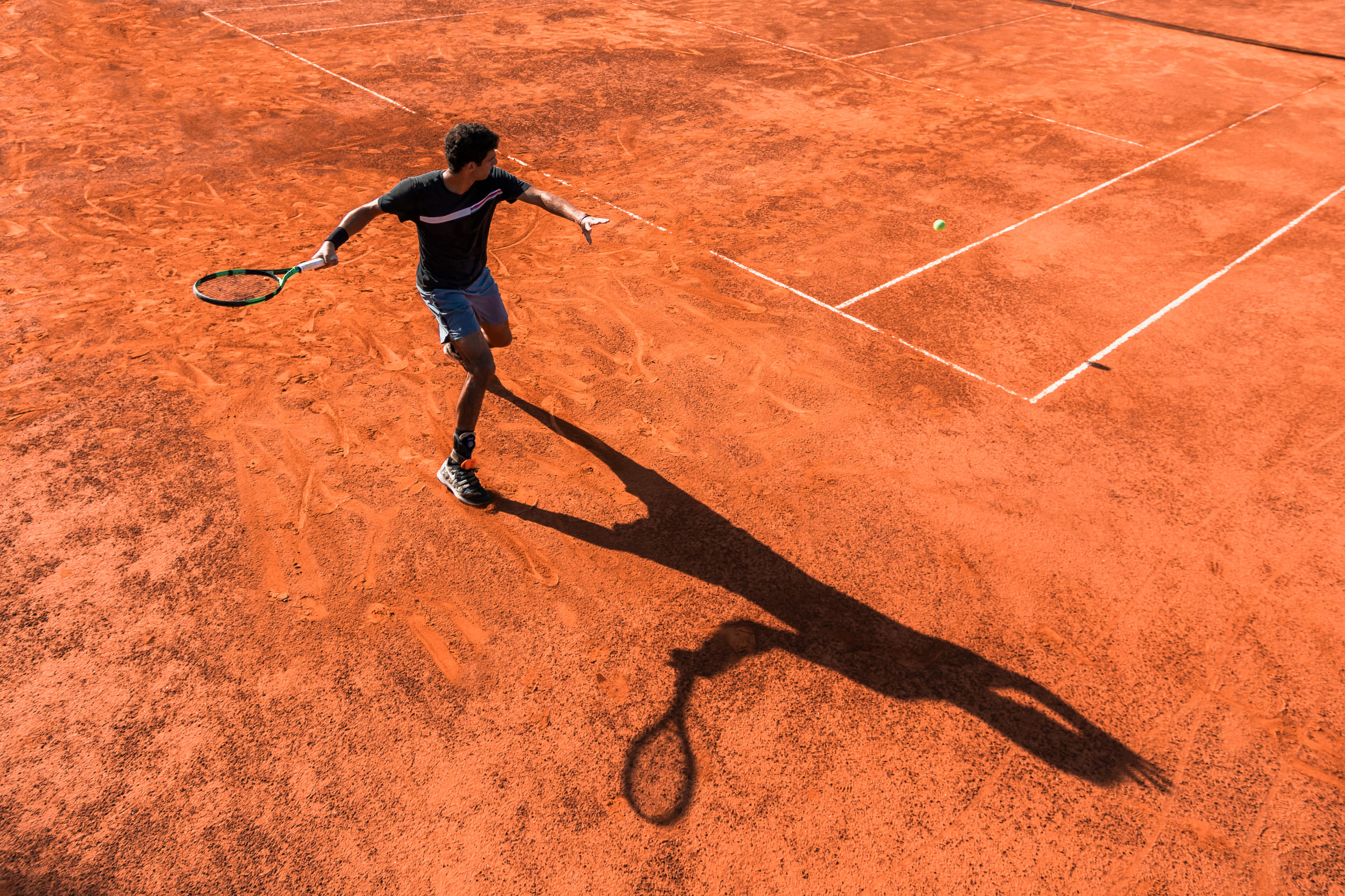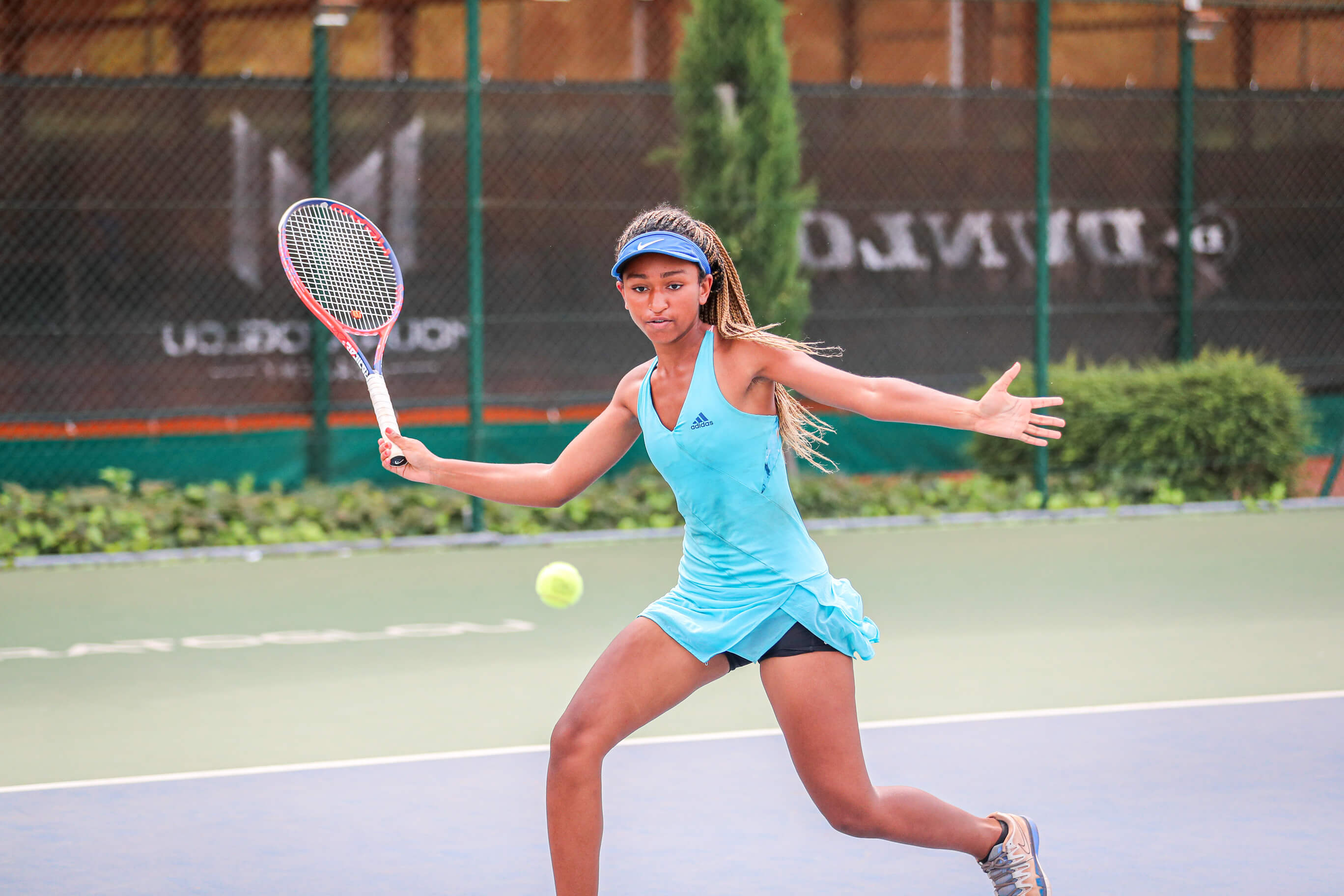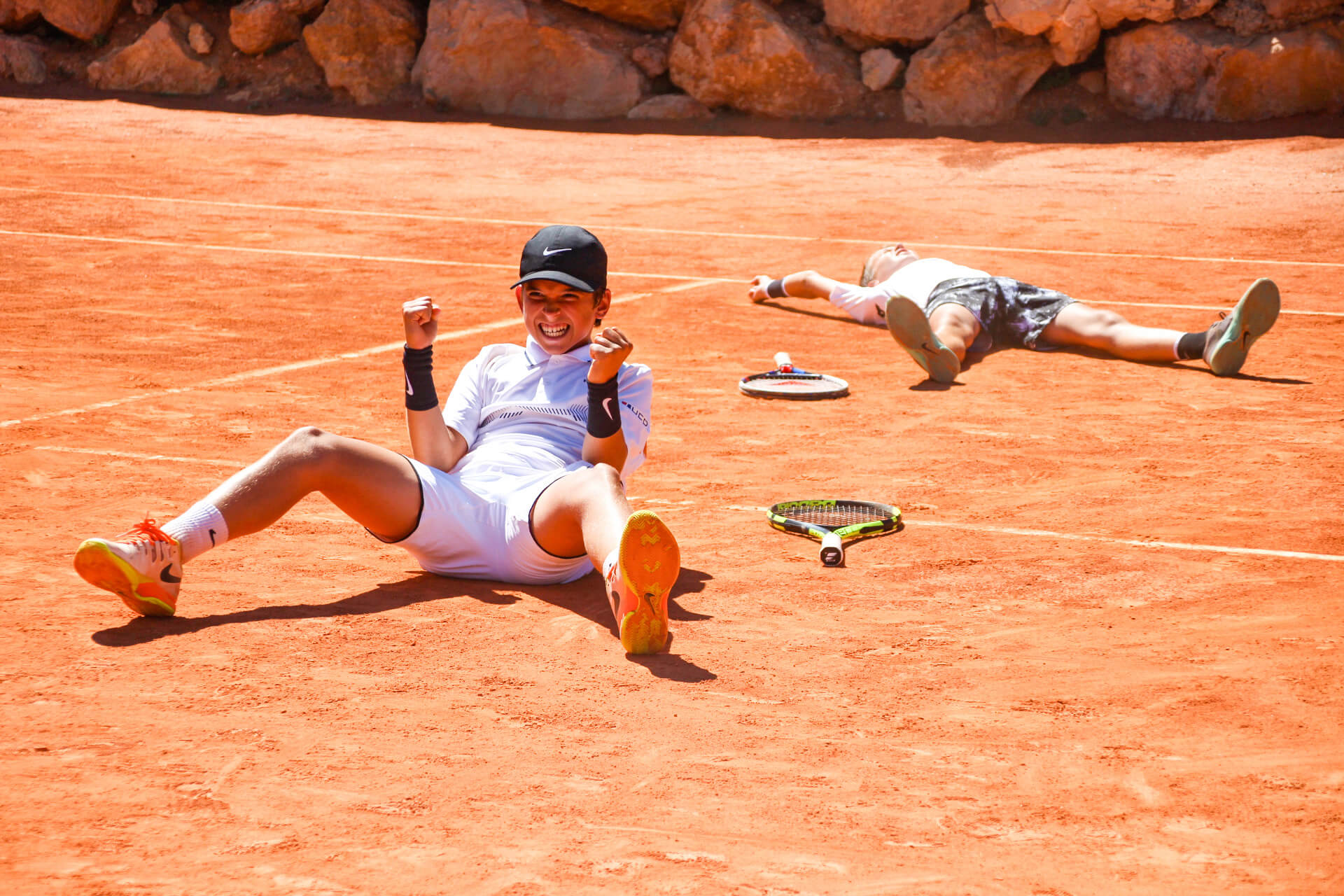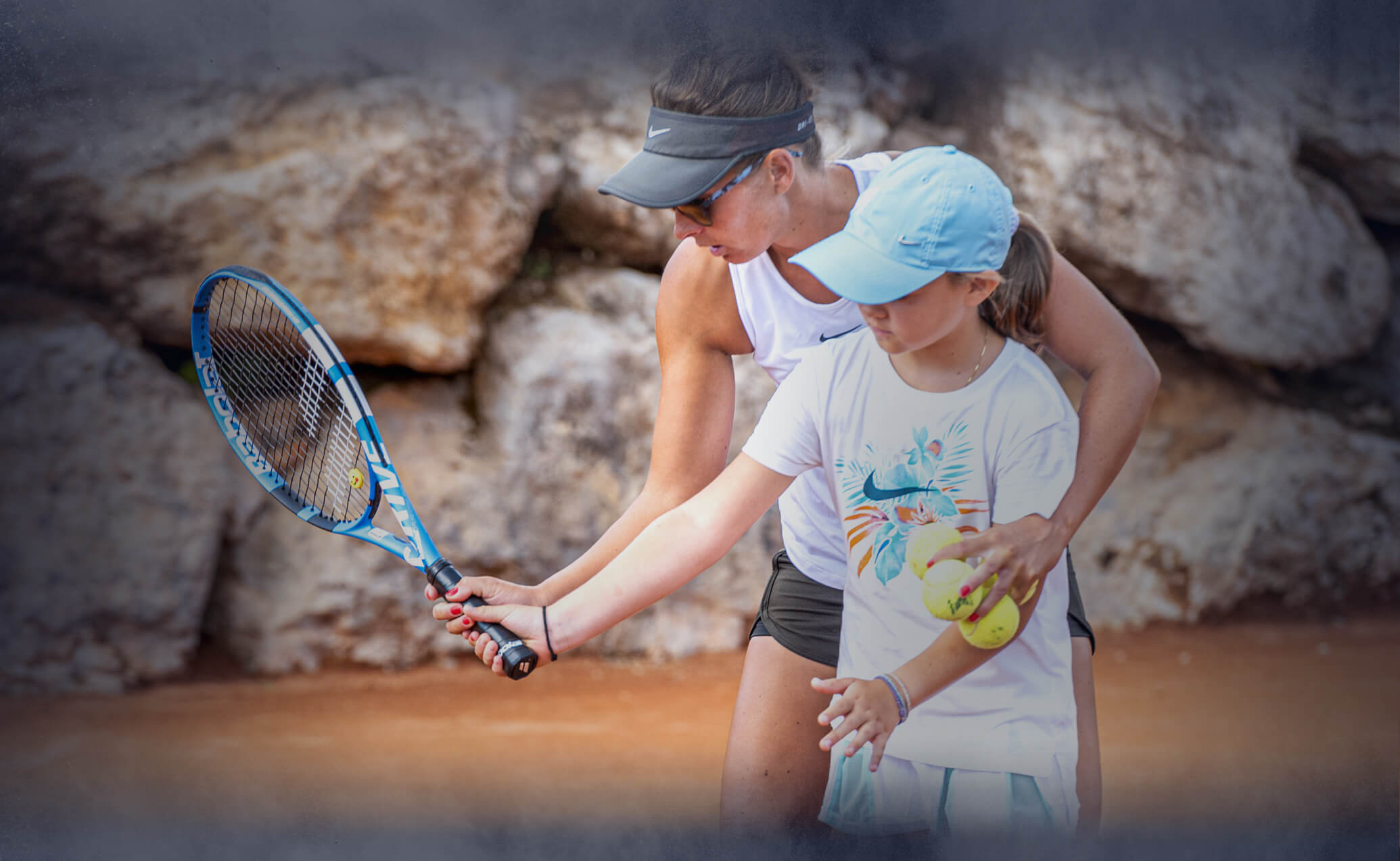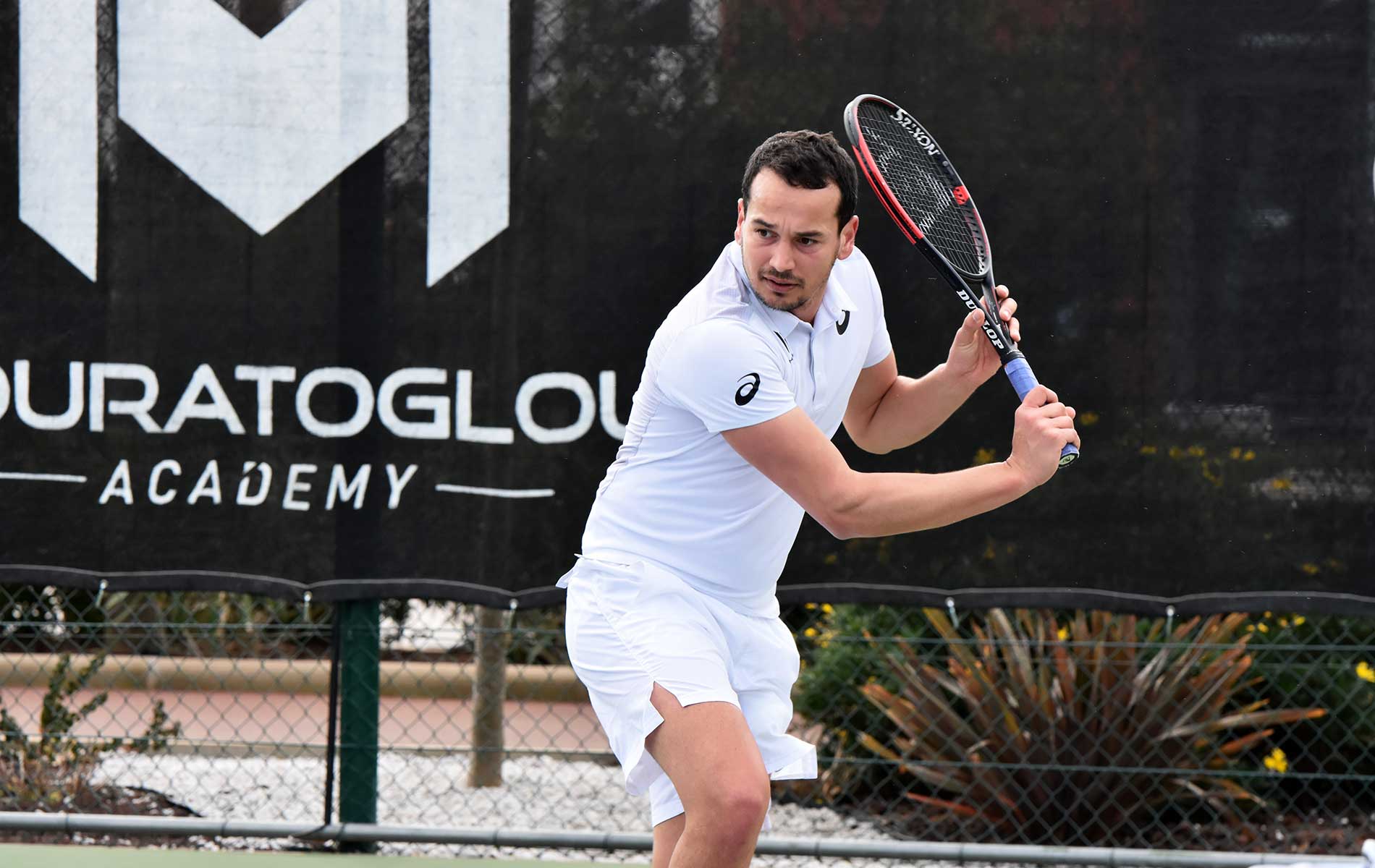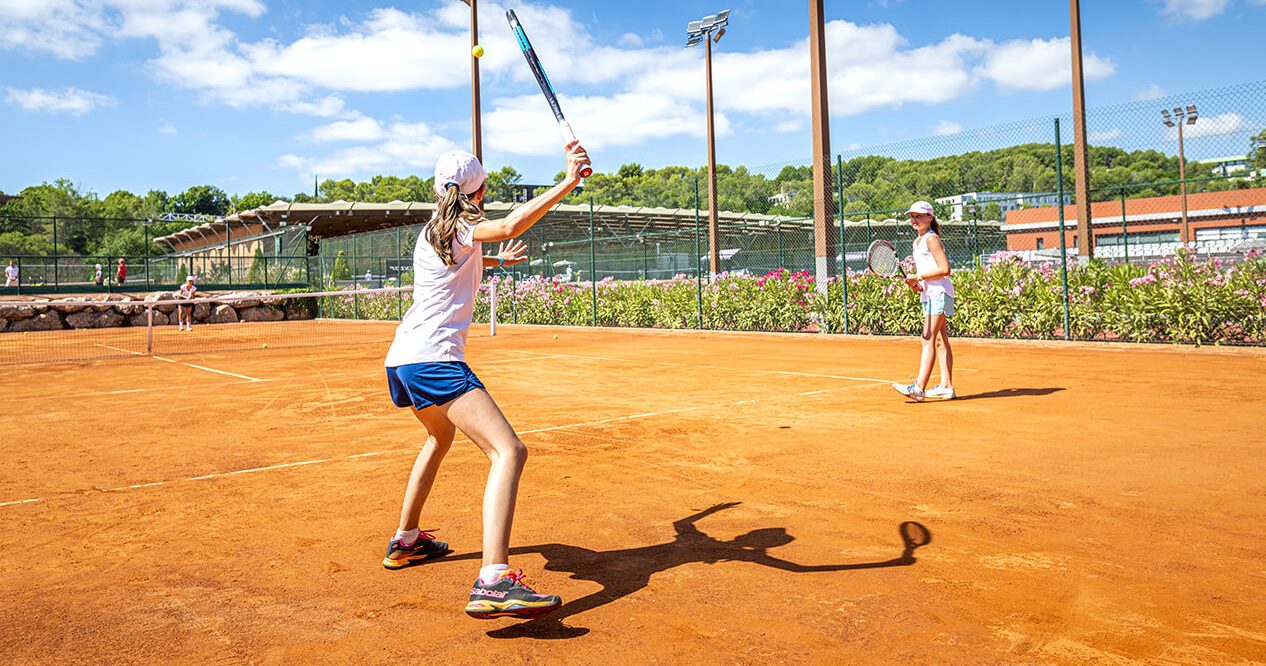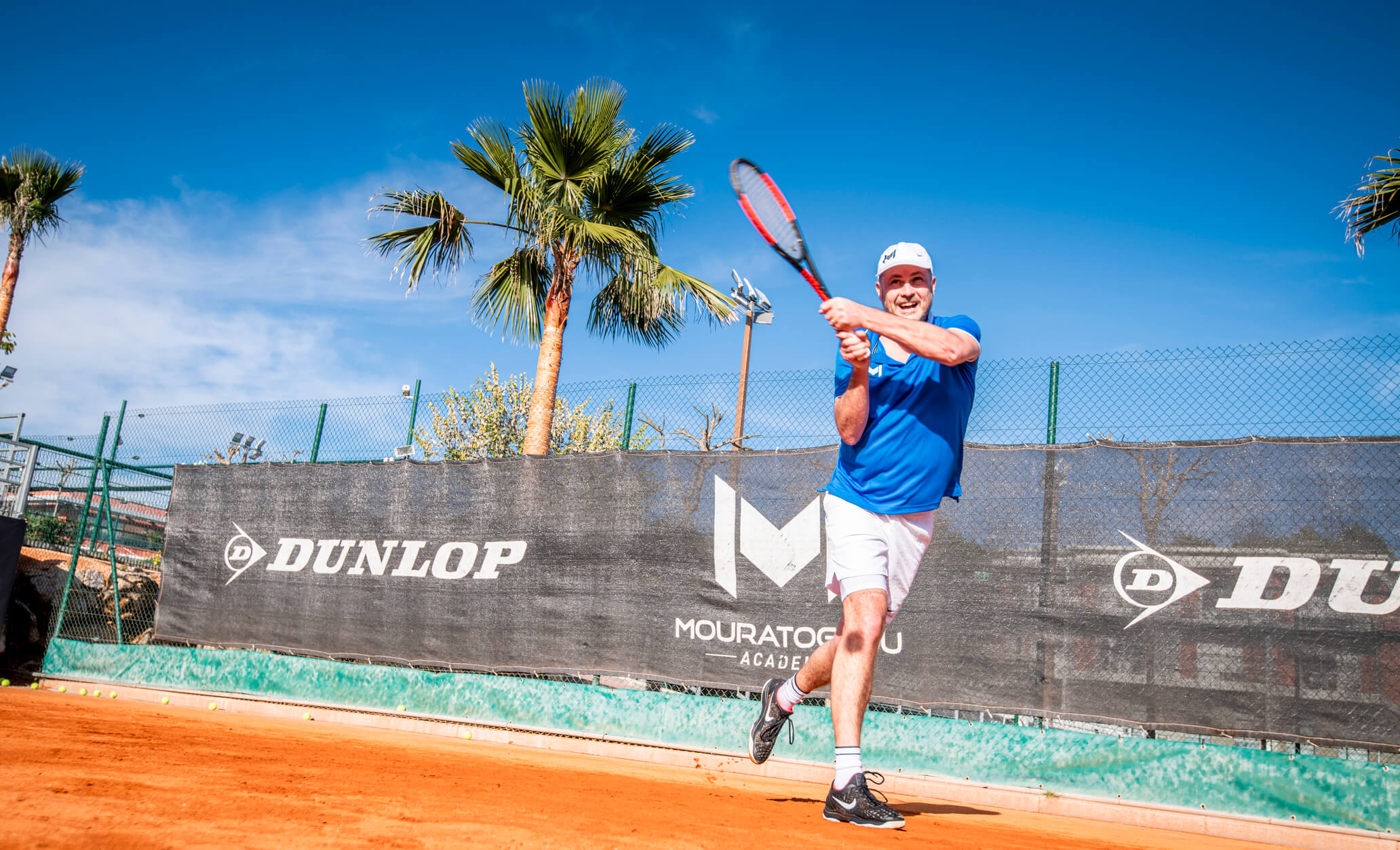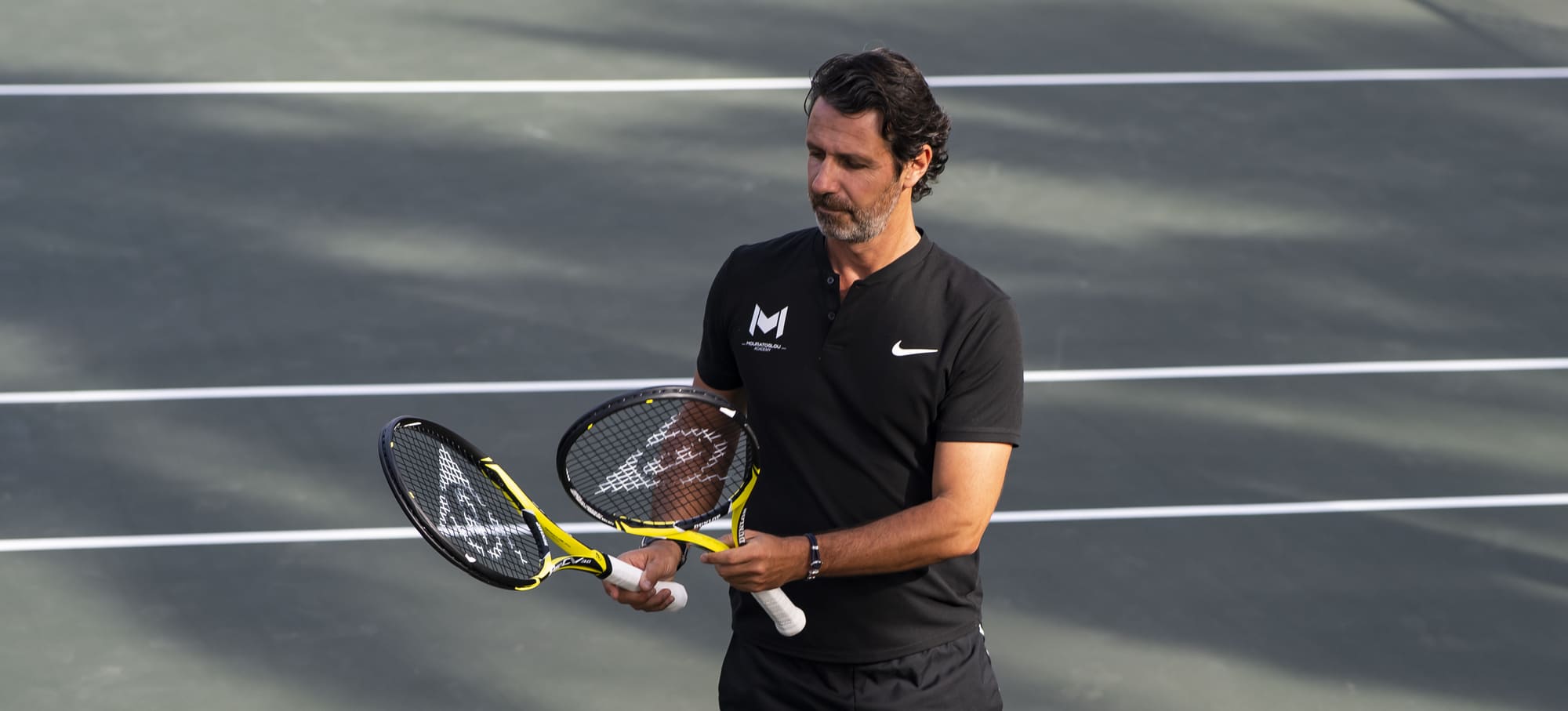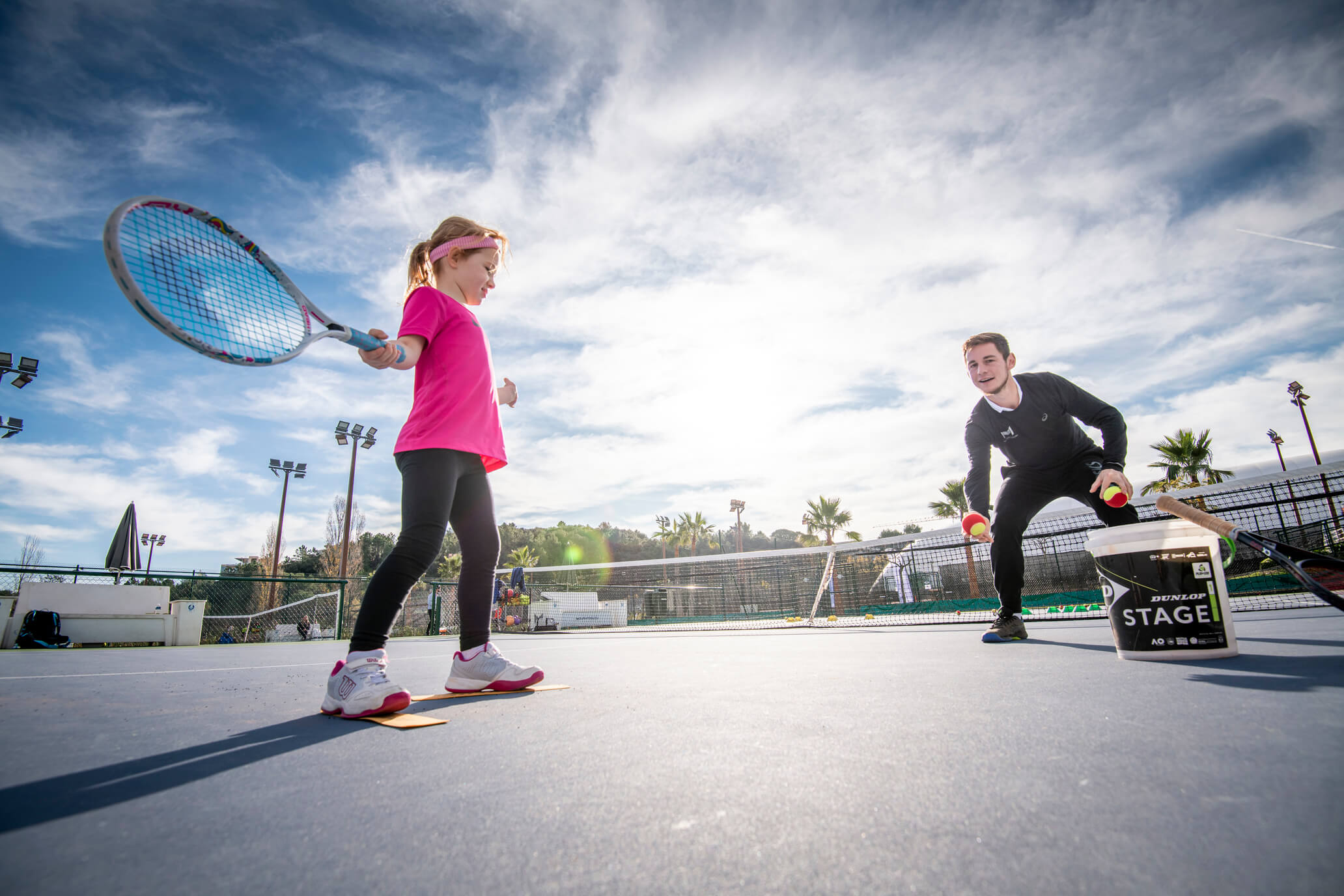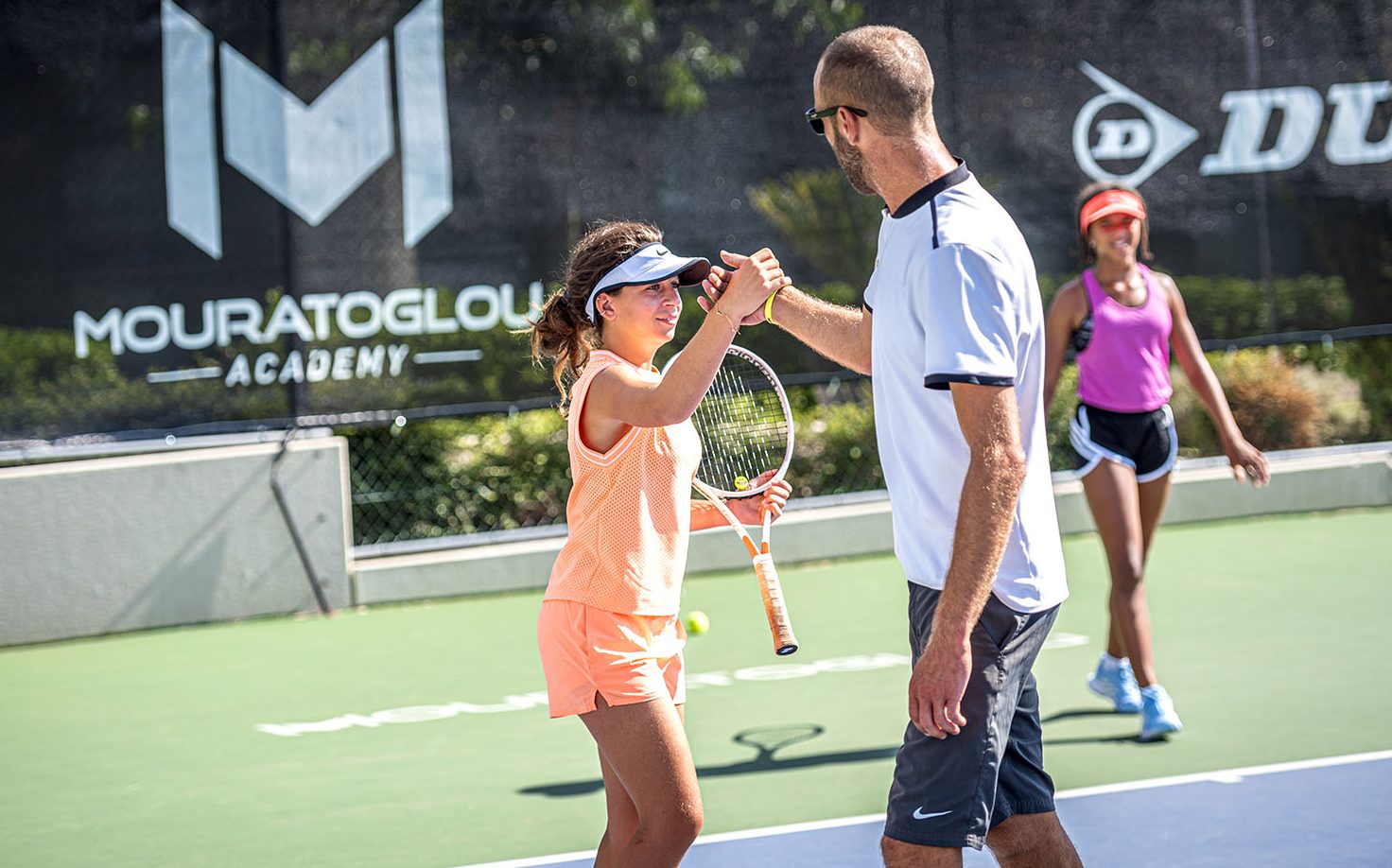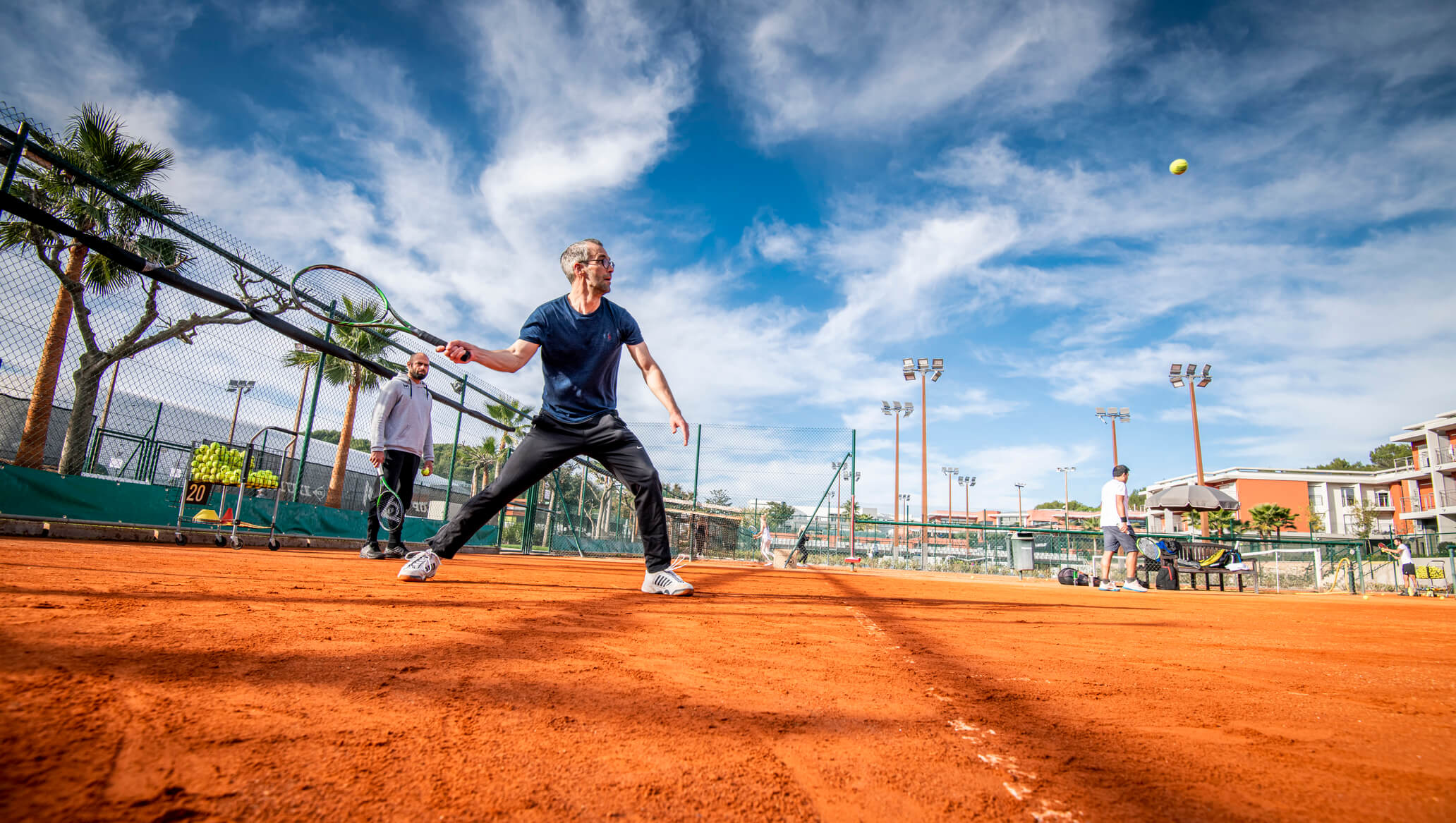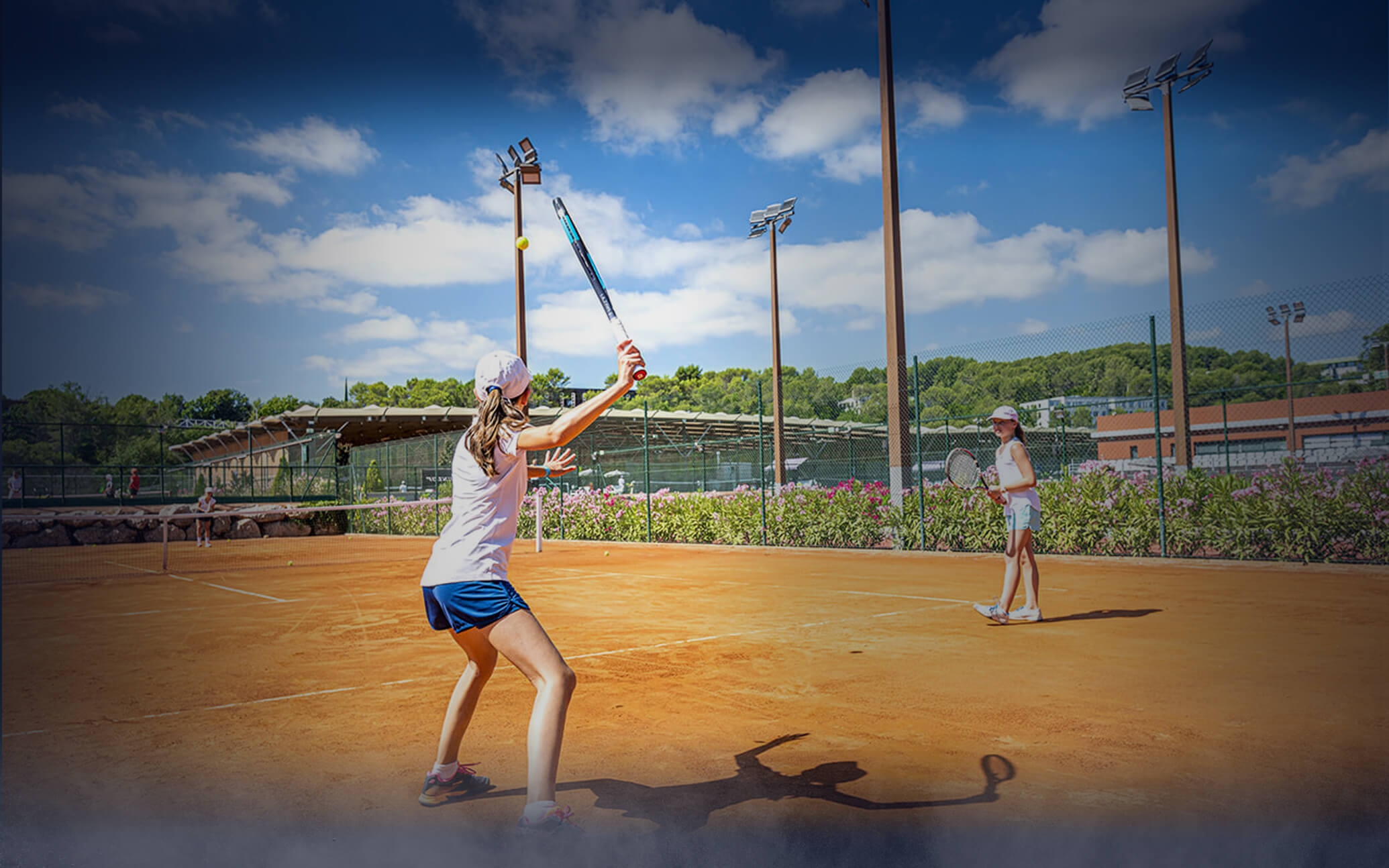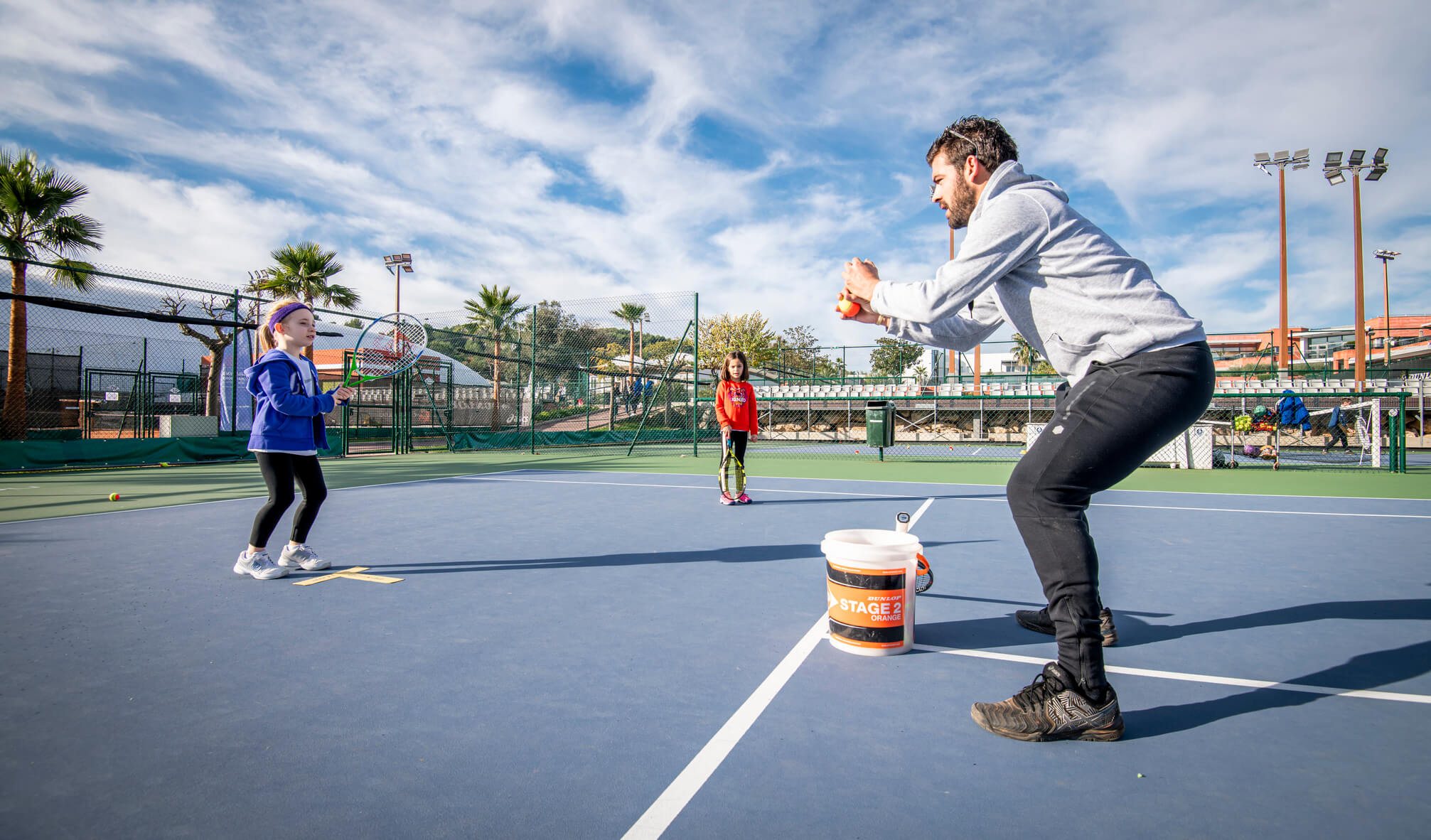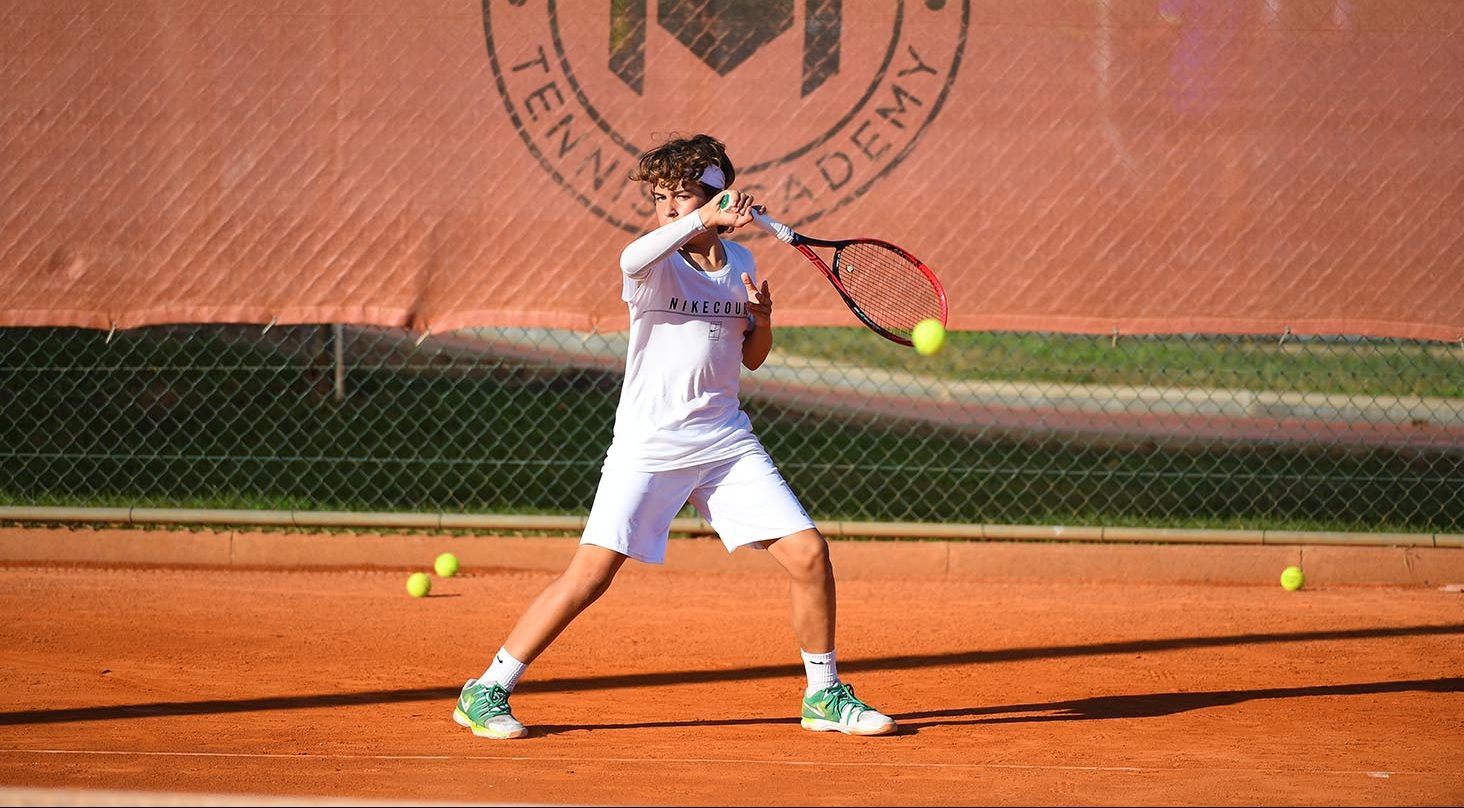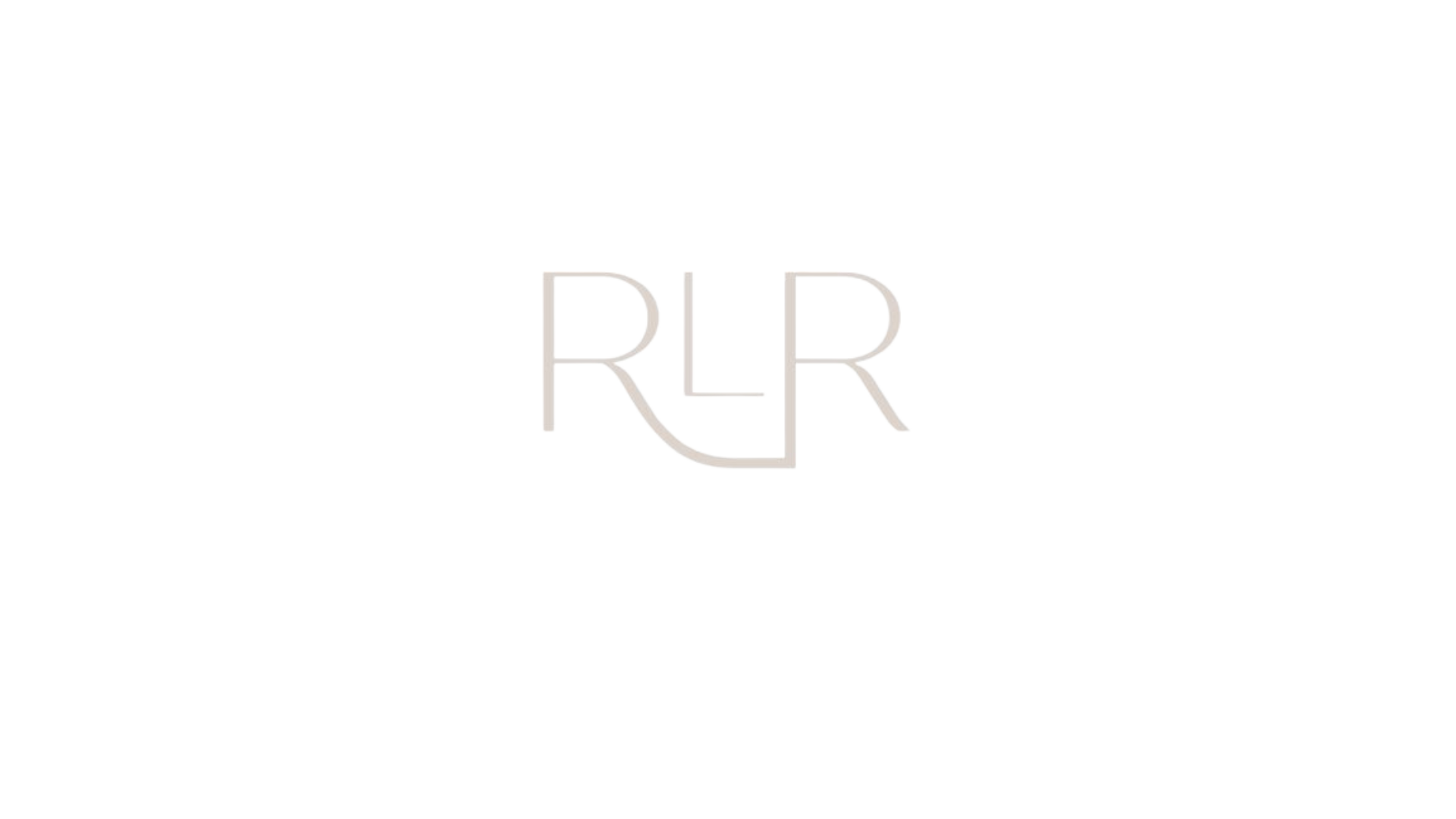The “trophy” position whilst serving
The “trophy” position whilst serving is a very important moment during the overall movements of a service. The quality of your strike will be heavily influenced by the quality of your technique during the service. Below, we’ll talk about the main elements that give you the foundations of an effective service, however, it’s just the foundations. Timing, forces, and, muscle movements should be taken into account for the training of every player. This is why having a good service doesn’t mean having a good trophy position. This position is very specific and has the most complex biomechanics of any tennis stroke.
Elements to consider:
- Position of the throwing arm (left for a right-handed person and right for a left-handed person)).
- Position of the head
- Position of the elbow
- Alignment of shoulders and hips
- Position of the forearms and racket
- Using the bend in the legs
- The chain of stances
Outstretched arm in front
In order to guide the ball forward and inside the court, the left arm must be outstretched to the tips of your fingers. The movement of the arm will allow you to obtain sufficient height. It must also be in front of your body to provide enough depth when throwing the ball. This will allow the player to transfer their body weight when they extend and push their legs upon impact.
Head looking towards where the impact will take place
When the arm is raised in order to place the ball at the right height and direction, the head will tilt back. This allows the player to see the upcoming impact, the head will stay in this position throughout the movement until the shoulder will pivot forward along with the ball towards the target. The head will then tilt forward to look ahead so that the player can analyze their opponent’s return.
The position of the right elbow, aligned with the shoulders
Because the left arm is stretched upwardly and forwards, the shoulders will naturally tilt (around 40-45° from the ground). This means that the right elbow should be raised so it is aligned with the shoulders. The elbow can also move back to allow the right pectoral muscle to open-up, this will allow it to return very quickly at the release and increase the speed of the strike during acceleration.
Hip and shoulder alignment
As well as the alignment of the shoulders and the elbow, there is also an alignment of the hips (pelvis) and the shoulders. Depending on the flexibility of the player, the shoulders can rotate relative to the hips, which can help with extra power through to the arms and racket.
The racket and forearms in a vertical position
In preparation to place the racket behind you, a movement that allows for increased acceleration, the racket must be as low as possible and use all its weight. The position at the end of this swing is the end of the trophy position and must have the racket and the forearm vertical, in order to optimize weight transfer. The racket can be tilted slightly forward.
Using the bend in the legs
In the trophy position, the legs have just started working.t. This bend legs allow the body to lean forward. At the moment of the strike, the whole body will be propelled by the legs. The body will move upwards and forwards allowing the racket to impact the ball at full speed, accompanied by the body weight and inertia transferred through the extension of the legs.
The chain of stances
To allow bending, the rear foot moves closer to the front foot to take it over in the bending effort. Depending on the player, it supports the weight of the body in the bend / extend movement.
In conclusion, after the detailed description of the various elements to be carried out during the “trophy” position. We can note that this position requires the coordination of many different elements. Being able to reproduce some or all of these elements is the result of years of practice. Achieving a high level of expertise at this point in the service should allow an effective end to the movement. However, during these other parts of the movement, many other technical difficulties and constraints could come to influence the final result. The trophy position is just one piece of the puzzle.





